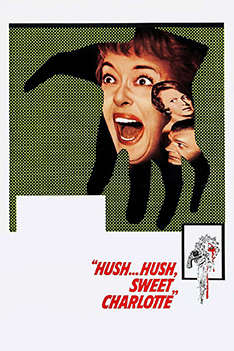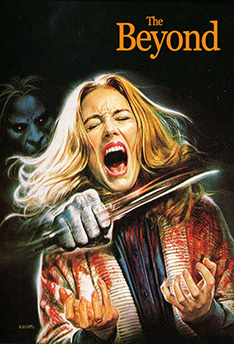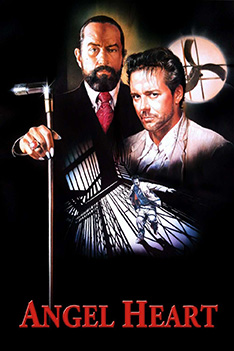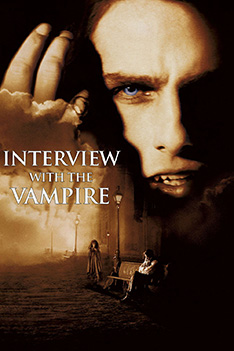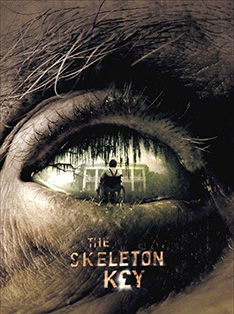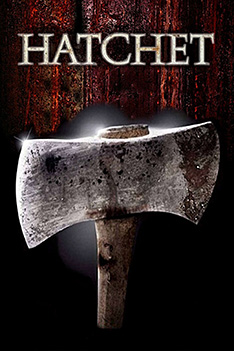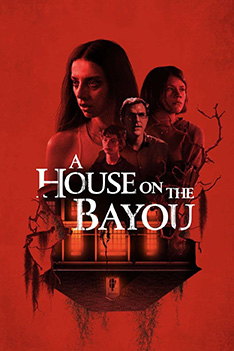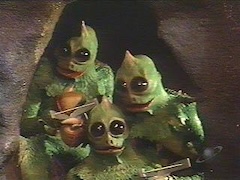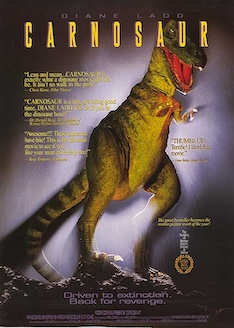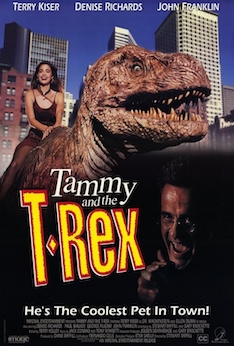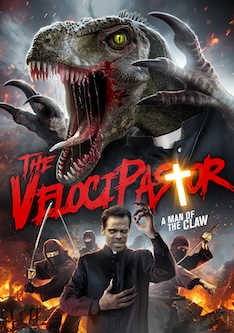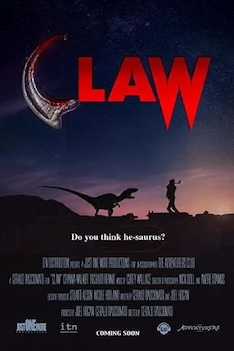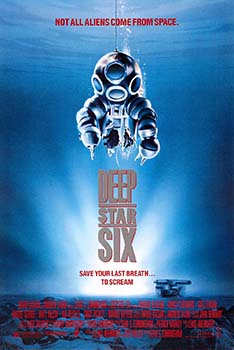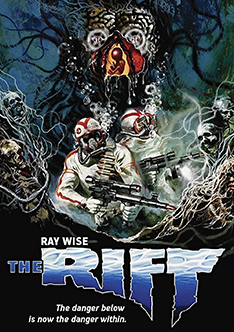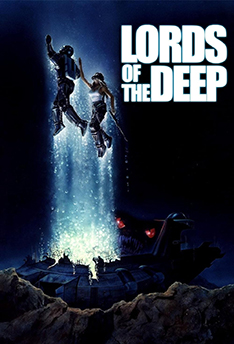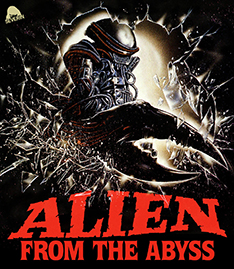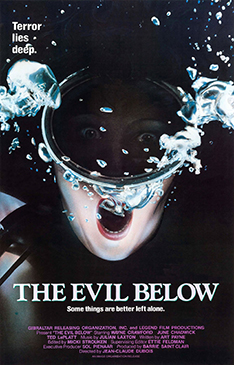Mission Elapsed Time: 20:00:21:06:42:40
This month both my personal blog, Ascent Stage, and my Flickr account turn 20 years old.
I’ve gone back through all of it — 862 posts, 30,558 photos. Other than endemic linkrot, an unfortunate smattering of Flash-based content, and services whose embed functions have crapped out (looking at you Flickr video, YouTube, and Google Maps), it has been a very pleasant journey through two decades of me. What follows are some thoughts on the evolution of the site, interspersed with my twelve most viewed (publicly-accessible) Flickr photos from the past two decades. (Here’s the 10,000th photo posted and, very recently, the 30,000th.)

#12 From the first hackathon the City of Chicago orchestrated around our open data initiative in 2011. I had just started as the city’s first Chief Technology Officer.
Since 1996 I had maintained a personal website called, pretentiously, hypertext :: renaissance. This site had no content management system — definitely not what would come to be called a blog — all hand-coded with table-based layouts, frames, and hacks. It was a beautiful mess, all mine, and visited by precisely no one. I loved it. Many rough years passed with browser-specific HTML atrocities, cgi-bin Perl scripts, and transparent single pixel GIFs. But help was on the way: personal blogging software. As a former grad student studying the English Renaissance how could I not jump onto a platform called Movable Type?
But we’re starting in 2004. Google had just introduced Gmail. Flickr was launched as a social photo service built on the corpse of an MMO gaming platform called Game Neverending. The social bookmarking site del.icio.us was in its pre-acquisition heyday. Feedburner brought the first bit of Web 2.0 cred to the Chicago tech scene. Javascript was having its moment with the Ajax framework. Mozilla’s Firefox 1.0 browser was attempting to cut into Microsoft’s then-95% share of the browser market with IE. MySpace had just passed 1 million users. Facebook had only just been created in a Harvard dorm room. Twitter was two years in the future. The iPhone, three years. My wife and I had two kids under the age of three. I decided to start blogging.

#11 One of the last things I did at IBM was serve as a contestant on the actual Jeopardy soundstage to compete against our latest AI, called Watson. I bested it on a single question. +1 for meatbag intelligence.
I have always loved writing and tinkering with software. And with a debilitatingly broad curiosity that has led me into countless hobbies, projects, and side quests blogging was a perfect outlet. But more than that, blogging itself seemed like fulfillment of the promise of the still relatively new web — the democratization of publication. So much more than the hobbyist/nerd niche websites of the late 90s, weblogs were full platforms to let anyone anywhere communicate in a relatively non-amateur way. Even better, as this was before the coming of fully hosted blogs, spinning up your own meant doing it outside any big corporation’s monetization imperative or walled gardens. This was the second coming of Gutenberg, at least to young me who liked writing about such things.
I got the platform up and running but the site needed a name. I wanted something hopeful, forward-looking, and ever-so-slightly nerdy. As a spaceflight dork I chose Ascent Stage, the piece of the rocket that goes up. (Eventually I had to explain this. And yes I do also own descentstage.com. I’ve often considered crafting an anti-hero version of me there.) First post: Oct. 1, 2004 about my best buddy Matt’s art show. (And he’s still making beautiful things, 20 years on.)

#10 View of the extinct volcano Mount Vulture from one of the three trips I’ve made back to my ancestral village Barile in Basilicata, Italy including once to be made an honorary citizen.
Reading back through everything some patterns come through almost immediately. Many posts were very short, 2-3 sentence observations or comments on links. It was a need for something like Twitter several years before that service was launched. I even experimented with something I called microposts, basically manual snippets in the blog margin. What doomed these is that they were never integrated chronologically with main site posts or in the main RSS feed. Twitter solved this particular problem, but it created quite another. My blog posting rate dropped off a cliff in the early years of Twitter, but, given the service’s 140 character limit (which was delightful), the length of individual blog posts expanded greatly.

Microposts failed but the marginalia survived and continues to this day. It’s a persistent collection of featured site sections, latest public photos from Flickr, interesting links (powered today by Pocket, but formerly pulled from del.icio.us), and books I have recently read (pulled from LibraryThing). In some ways the margin is the oldest section of the site, at least in concept. It’s a throwback to a time when open, interoperable, embeddable web functionality was everywhere. A web made of many pieces loosely joined. Being distributed these pieces have broken many times through the years, but that’s the thing about a garden without walls: there are always new plants to find further afield.
Many posts in the early years were lists of favorite things like links, gadgets and software — most of which no longer exist, given the pace of technological change and startup frailty. And yet the reminders of what caught my fancy — such as what my backpack carried on international trips — have some historical and emotional value.
And speaking of the latter, one early topic category called The Darnedest Things (and a broader one called Kids) was a running diary of observations on parenting two and then three small children. My kids are only just now discovering these snapshots with equal parts fascination and horror. Like finding a lost diary.
Hurricane Katrina was a catastrophe for many, including my extended family. In an era before widespread social media Ascent Stage was a collection point for information as my wife’s grandparents fled coastal Mississippi. Eventually it was where our family could see that their house was destroyed.

#8 One of my many pandemic lockdown projects, the coral brickscape taught me how difficult it was to build a squishy, curvaceous reef out of hard plastic 90° angles. It also got me an (unsuccessful) audition for Lego Masters.
Oh the music nerdery! These were the early years of MP3 files and online music stores, mostly pre-streaming. Having already ripped my entire CD collection to digital I was prepared for the onslaught of music organization, visualization and analysis tools that came about in the early years of the millennium. Hoo boy, I had some fun:
- The Mashability Index — an attempt at visualizing the most mashed-together artists from thousands of songs.
- Evolving my music genome — an attempt at using Apple’s Genius music recommendation algorithm to cross-reference its output recursively, highlighting duplicate tracks. This, I posited, would ultimately generate a playlist where my musical interests overlapped, each track of which being a root node for all the music that I have come to love moving forward from that point. It sorta worked.
- Culinary turntablism — using a traditional Chinese rotating food serving platter and the dishes placed upon it like a player piano roll. You should have seen the incredulity of my colleagues in Beijing over the course of a multi-hour meal as I assiduously noted when dishes were added and removed to the rotation and how many revolutions they made.
I dabbled in short album reviews on the blog, but mostly used it to distribute novelty remixes (like this one, danger!) and what I called giftmixes (like this one from 2011), lightly-mixed continuous collections of tracks for friends. These were also the days of my participation in the DJ collective known as Beat Research Chicago with Jake Trusell and Jesse Kriss. Such fun as we lit it up at Villain’s in the South Loop for a few months. Music was also a huge part of a series of bonkers holiday parties thrown by my wife and I. With a custom-built DJ booth, handmade electroluminescent jackets, and a steady stream of Chicago police officers demanding we turn it down the three final parties called Out of This World, Around the World, and The End of the World became legendary. I sure do miss those electroluminescent jackets.

#7 The popularity of this photo is what happens when Flickr features it on their Explore page. But I love the picture for how the building’s floating truss echoes the L track substructure. Chicago Loop, Washington and Wells, looking west.
Like any good blogger I wrote a lot about food, but very specifically about recipes and experiments in Southern Italian cuisine, relatively unloved in the USA. It was cooking as ancestor worship, basically. These were also the years of winemaking and brewing as well. Of course I had to do it the hard way, ginning up everything from colonial-era Applejack and wine from wild-picked raspberries to an Irish red ale in memoriam.
And then there was work blogging. The lion’s share of posts on Ascent Stage to date were written while I worked for IBM. Most of my time there was spent working on cultural heritage and related projects in Russia, Egypt, China, Ghana and dozens of other far-flung locales for shorter durations. These were the most formative years of my early career and the fact that I wrote about them at such length, naively in some cases but always with extreme curiosity and wonderment, brings me immeasurable joy. We got not one but two History Channel documentaries out of this work, not a single pixel of which seems to remain available anywhere on the Internet. I do know that Omar Sharif said my name in one of these, but you’ll have to take my word on that.

#6 An exploration of the former freight delivery tunnels below every street in Chicago’s downtown. The whole thing flooded when it was punctured accidentally beneath the Chicago River in 1992.
Then there was the brief but intense dalliance my colleagues and I took in virtual worlds, like Second Life, as we were researching technologies for our work in China. This roller coaster seemed to stop abruptly … and yet given the current fascination with AR and VR headsets and open world gaming these days it seems pretty clear that we were way out in front of the technology back then. What’s old is new. No more so than with AI. The blog documents one of my favorite memories at IBM at the very end of my time there in 2011: serving as a human test contestant while training the AI supercomputer called Watson as it prepared to compete on the game show Jeopardy. I beat the AI on one question. A single question.
I left IBM in 2011 which corresponds pretty precisely with the end of frequent posting on Ascent Stage — but the writing that did happen got longer and in some ways more serious. The reduction in posting is likely not that I had more time to write while working for IBM but because I had so many more outlets in my new role as Chief Technology Officer for the City of Chicago. Also, my travel during this time fell to nearly zero. And then of course there were the continuing effects of microblogging via Twitter.

#5 I spent much of the summer of 2018 in Ghana, Africa as part of IBM’s Corporate Service Corps working with a group called Aid to Artisans. Here’s a classic dish of tilapia and banku (fermented corn meal).
My professional and intellectual focus at this point was primarily on urban design and technology. Even before I joined the mayor’s team, Ascent Stage had become an outlet for exploring the intersection of data, especially open data, and the experience of life in cities using Chicago as a platform. Here are some highlights:
- Our second city — an essay I was asked to write by WBEZ in Chicago and which, in retrospect, seems like the beginning of my deep thinking on cities and technology. A favorite.
- Lessons from unmaking urban mistakes — wherein I extract six examples from the past to guide us as we explore a future of networked urbanism. Holds up.
- What the public way means in the networked age — an ode to the sidewalk as the original social network.
- When tech culture and urbanism collide — still not sure we’ve learned to be skeptical about urban solutions coming out of Silicon Valley, a giant suburb literally built around the cult of the garage.
- City of Big Data — another career highlight participating in the curation of an exhibit at the Chicago Architecture Foundation (now Chicago Architecture Center), weaving my prior museum work into current interests.
- What we talk about when we talk about smart cities — one of the last in-depth treatments I gave to this subject before it moved to the saner side of the hype curve.

#4 One of my great loves/labors is a 300+ gallon saltwater reef aquarium. Here is bubble coral (Plerogyra sinuosa), which took me years to figure out how to keep alive. (Still going!)
But really Ascent Stage has been the most fun when it was just cataloging the odd and the interesting, even when I didn’t realize it at the time. Here’s a selection:
Turns out not 20 days into even having a blog in 2004 I made an aside about my dislike for Donald J. Trump. (This hasn’t changed.) He tore down the Sun-Times building which, admittedly, was an unlovable eyesore on the Chicago River, right outside my window next door at IBM Plaza. We documented the whole thing and created a timelapse video, which I believe is my most watched video on YouTube. The refrain “there’s beauty in the breakdown” of the track we set the video to, “Let Go” by Frou Frou, hits differently these many years later living with the other things Trump has wrecked.
My friend Len introduced me to sensory deprivation tanks, something I enjoy to this day as a vehicle for relaxation and meditation. That in itself wouldn’t be very interesting except that the local ABC news affiliate did a story on it. Their spin? Harried working dad uses sensory deprivation to deal with stress. My wife was having none of it. But I was not done with the tanks. Through a series of experiments I brought a waterproofed iPad nano and heart rate monitor into the chambers to document taking all the senses away but one. Altered States it wasn’t. Scientific it wasn’t. But, hey, I was dealing with stress.

#3 Another pandemic project, this is my modification of the Lego Police Station with a Black Lives Matter protest out front.
It’s tough to choose a favorite moment on the blog over twenty years, but the back-and-forth it prompted with my favorite novelist, Richard Powers, winner of the 2019 Pulitzer Prize for Fiction, has got to be close to the top. I had mentioned Powers early on in a post which prompted a reply in a now-defunct electronic literature forum. But it was in 2007 that I directly called him out for a claim that his then-latest novel, The Echo Maker, was written completely by dictation using text-to-speech software. He replied, convincingly and humorously. This was the essence of the early web, nailing a note to tree in a dense forest of websites and having it be found (by someone famous, no less). I’m sure this still happens via social media, but the direct access it seemed one had to experts of all kinds in the early days of the web still seems magical to me.
Lego bricks occupy a lot of space on this blog. And in my house. And in my life. Building crazy things got me through the pandemic lockdown (and an audition on Lego Masters, twice), but well before then it was the launchpad for a small business with my two young sons. When our first child was born I used some paternity leave time to convert his photo into a grayscale mosaic and then posted a how-to. This got picked up somewhat widely around the web and eventually led to our establishing a service to do it for others, called The Brick Brothers. We received a letter from the Lego Corporation, which I thought would be the boys’ introduction to the concept of cease-and-desist, but which was in reality a congratulations. I couldn’t love those Danes more.

#2 This photo-within-a-photo at the northwest corner of the intersection of Dakin and Sheridan in Chicago depicts my grandfather, father, and uncle sometime in the late 1940s. I returned a few times with my family to recreate it.
Pretty sure this blog earned me honorary citizenship in Italy. I had been writing about my Italian heritage for a few years, having studied there in 1993 and learning about the spectacular and relatively-undiscovered province of Basilicata, the region from which my family hails. It began with the help of Ancestry.com as my kids and I traipsed all over Chicago locating graves and places from old photographs. Some folks in Basilicata noticed and eventually invited me to come to Barile, the town of my great-grandparents, as their guest. It was an odyssey I will never forget in no small part because of the rarity of serving as a tour guide for my aging parents. Bringing it back home I wrote 1903, a piece of speculative fiction and genealogical detective tale that is easily one of my favorite posts.
Going back through two decades of cultivating this weedy garden, I’m reminded of seeds planted way back when that flower today. As early as 2009 my interest in restoring ecosystems is evident which today manifests as a broad study of how complex systems (like dinosaurs and towns) fail. And it’s probably why you’ll find more recent posts about underwater exploration and coral reefs, including a fundraiser I launched for Marhaver Lab in 2022. The last two years of Ascent Stage have been dominated by long-form, multi-part adventures. Last year my daughter, niece, dog, and I embarked on an epic multi-state tour of the American West in a jalopy camper trailer hauled by an electric vehicle. This was an extraordinary trip in many ways, not the least of which was being able to document how to actually do it logistically. This year’s adventure has mostly been about horror — cancer, sure, but really horror movies. Starting with a Zombiefest in 2008 through lockdown binge-watching horror has long been a theme explored in these posts. This year most of the pixels spilled here have been devoted to deep dives into the places in these movies, specifically a segment called The Terror Tourist which I contribute to a podcast out of Salem, Massachusetts called the Heavy Leather Horror Show.

#1 Turns out my most viewed photo is a flagrant copyright violation. After watching 2004’s I, Robot I wrote about where I thought the CGI buildings were placed. Nerds loved it.
So that’s it. That’s 20 years of self-publishing. It’s possible that one day blogs will be seen as a period-specific format, much like silent films are to the early 20th century. I hope not, of course, as their personality and authenticity seem ever more important as the web fills with AI-generated slop curated by corporations inimical to the hyperlink.
Like anything online the picture this blog paints of me is incomplete at best, an artifice of persona at worst. But it is me. I’ve detailed many highs in the posts and photos linked here, but the blog also documents some low points — let’s call them bumpy landings before I ascended again. On this eve of a new life phase which will surely have its share of mission calamities, I’m glad for it all. Here’s to many more orbits.
_________________
End transmission.
Undead Mockingbird
Prefer to listen to this post?
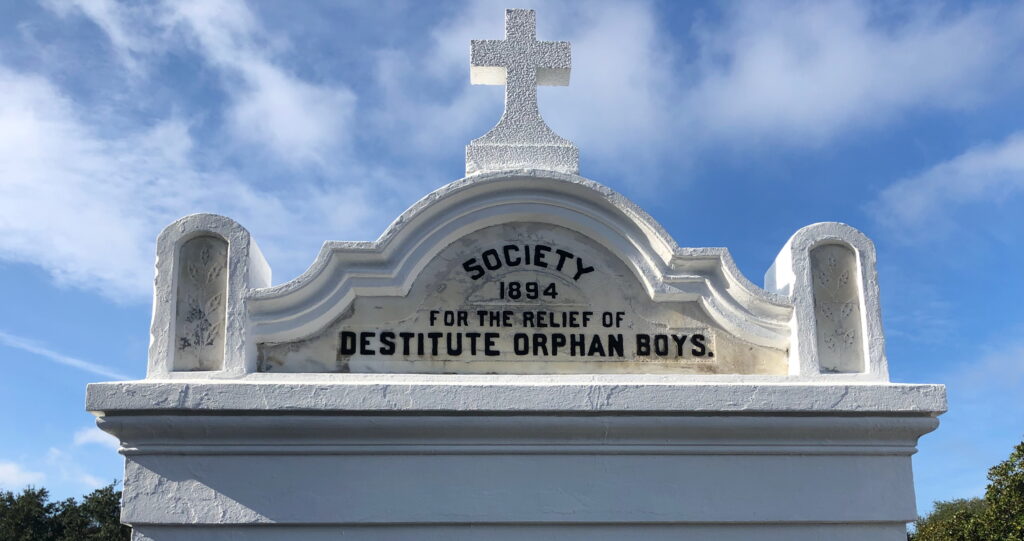
“It’s a sin to kill a mockingbird,” we’re told by Atticus Finch, in the novel title-dropped in that line. Now, think back to your 8th grade self and try to remember why it’s a sin in his opinion. It isn’t because it’s a pretty bird; Atticus says flatly “Shoot all the bluejays you want, if you can hit ʼem”. Anyone remember? It’s because, as Atticus says, they “don’t do one thing but make music for us to enjoy”. They are, in other words, innocent. And the potential execution of an innocent person is what the book and movie are all about. The story is also about rape, racism, rabid animals, murder, an attack after a Halloween pageant, and a creepy recluse in a house named Boo. Despite this, no one would argue that To Kill a Mockingbird is horror story. But it is a prime example of Southern Gothic, a sub-genre that is full of the grotesque, macabre, and often supernatural and which, as we will explore on our journey today, easily slides into full-blown horror.
Welcome to this week’s itinerary, travelers, called Undead Mockingbird. Grab a sweet ice tea with lemon to go because we’re headed south of the Mason-Dixon line to a land where I went to school, twice, on purpose. And it changed me forever.
Before we arrive at the destination that is Southern Gothic Horror we should probably hit a few waypoints for the terms that comprise it. Let’s start with “gothic”, since, as terror tourists, you’ve likely encountered movies that are utterly suffused with gothic ambiance and tropes. Now, unless we’re talking about the extinct Germanic language of the 5th century Goth peoples or trying to describe why you borrowed your sister’s eyeliner to go to the Siouxsie and the Banshees show — neither of which we are talking about — then we’re talking about a style of architecture.
Gothic building design was a European architecture of the 12th to 16th centuries. You’ve seen it: pointed arches instead of curved domes, flying buttresses that meant walls could for the first time do things — like hold stained glass — instead of solely making sure the roof didn’t fall in, and elaborate ornamental stonework of all kinds including, yes, gargoyles. If you can picture Notre Dame in Paris or the Duomo in Milan then you know exactly what Gothic architecture is. Importantly the term “gothic” was originally applied to this form of architecture as an insult. Artists centuries later considered these buildings to be barbarous, monstrous even, precisely because they were so different from the classical curves of the ancient Greeks and Romans that the Renaissance so eagerly sought to revive.

So, the term “gothic” was originally used with contempt. But it was also applied to very old structures, many in states of decay and ruination by the time of the Renaissance. These buildings — many of which were churches — were equal parts beautiful and rotting, isolated and grandiose, and were the primary inspiration for the gothic fiction of the 18th and 19th centuries. Many of these stories, the first of which is The Castle of Otranto by Horace Walpole from 1764, take place in gloomy landscapes and/or outright haunted manors. And the people in these places, well, they tend towards the end of the emotional spectrum where rage, lust, madness, and terror dwell. Think of the tales of Edgar Allen Poe, Bram Stoker, Mary Shelley, Charlotte Brontë, and Oscar Wilde.
Gothic fiction was the beginning of the horror genre as we know it. The aesthetic of mystery, of decay, of the past forcing its way into the present (sometimes supernaturally) so defined what in the West would visually be considered scary that most of the costumes you see today at Halloween are just riffs on old gothic motifs. OK so just glancing back at our map: gothic architecture, specifically the buildings of that style in a state of decay, inspired gothic fiction which itself eventually morphed into the larger category of horror fiction.
So how does Southern Gothic, a distinctly American art form, come from what was primarily a European genre? Where the rotting hulks of churches inspired the gothic authors of Europe, the dilapidation of once-majestic plantation houses in the post-Civil War South became a focal point for authors in America seeking to explore themes of a flawed society trying to rebuild itself. These flaws, often personified by grotesque or mysterious figures (like Boo Radley from To Kill A Mockingbird), usually involve racism, violence, and religious extremism — even hoodoo and voodoo.
The characters in Southern Gothic fiction are often physically or psychologically twisted – shut-ins, freaks, back-woods types and those unable to move forward in tight-knit communities, sometimes too tight. These characters, caricatures really, are usually colored — and color is key in this genre — by the dark events of the past, the violent history of race relations, the resentment of Civil War defeat, the Great Depression and, more recently, the devastation of Hurricane Katrina.

Whether overt or as subtext the point of a Southern Gothic story is to reckon with — if not fully rewrite — the myth that the pre-Civil War south was an idyllic, harmonious, and happy time and place. It is, like gothic literature, an attempt to deal with a society in ruin. Authors who wrote in this style at least some of the time include William Faulkner, Flannery O’Connor, Eudora Welty and more recently Anne Rice and (one of my favorite authors) Donna Tartt.
Tourists, you may see where we’re headed. It is not such a leap from the dark themes of these Southern novelists to straight-up horror: mansions rotting into swamps, snake-handling preachers, and unreconstructed beliefs in the supernatural. Southern Gothic often becomes Southern Gothic horror and nowhere is this more true than at the movies.
Before we talk about films, though, a quick note on genre slippage. Categories are always tricky; what’s the real difference between a dark thriller and a horror movie with a gore score of zero, for example? But in the case of the category of Southern Gothic we’re actually taking about a geographical place, specifically the states of the former Confederacy. There are many films which you might otherwise call Southern Gothic except for their setting in the American Midwest or amongst the hillbillies of Appalachia. And many of these films are wonderful — see especially The Night of the Hunter from 1955 about a serial killer posing as a preacher in West Virginia or the 2017 film 1922 based on the Stephen King novella about murder and guilt on a Nebraska farm. But for now let’s constrain our travels to the South and a few standout films.
Hush…Hush, Sweet Charlotte is a 1964 creep-out starring Bette Davis and Olivia de Havilland as middle-aged cousins in Louisiana attempting to keep the local authorities from demolishing a home in the path of a new interstate. That’d make for a pretty good straight drama, except that Bette is also the primary suspect in the decades-old unsolved murder of her former lover whose decapitated head comes back for a visit. Of note, this film is 133 minutes long and very slow by contemporary pacing standards, but it is a great example of the subgenre.
The masterful director Lucio Fulci wasn’t afraid of trying anything and his film The Beyond from 1981 is his take on Southern Gothic. Filmed on location in and around New Orleans, The Beyond is about a woman, Liza, who inherits and attempts to rehabilitate a crumbling old hotel — which happens to be sitting atop one of the seven gates of hell! This is an exceptional film, part of the Fulci’s Gates of Hell trilogy, one of the UK’s “video nasties”, and did not see an uncut release in the US until 1998. You need to see this film not only because of its contribution to our subject today but because the ending is bleak as all hell — er, as all beyond.
Angel Heart from 1987 is a noir-ish detective tale with a satantic twist. This film partakes of lots of Southern Gothic tropes aesthetically, but does include one we haven’t mentioned yet, the half-crazed war veteran. In this case it’s not a Civil War veteran but an injured WWII solider who’s gone missing. A man named Louis Cyphre, played by De Niro, hires a private investigator named Harry Angel, played by Mickey Rourke, to find the veteran who owes him a debt. It’s a fallen angel tale set amidst the dark, oppressively humid decadence of New Orleans.
And if Big Easy decadence is your thing then you’re likely a fan of the novels of Anne Rice about the vampire Lestat. Interview with the Vampire from 1994 is the big budget film version of the novel of the same name, featuring Tom Cruise, Brad Pitt, Antonio Banderas and a young Kirsten Dunst. Much of the film takes place in antebellum Louisiana with all its Caribbean disease, rotten swamps, wrought iron balconies, and candle-lit passages. It’s ultimately a tale of child murder — or at least, taking the human life from a child — and the grief surrounding this act. But it’s also a very modern take on the visual trappings of southern-inflected horror. I suggest reading the books and skipping the movie, but hey you do you.
If you want the Cliffs Notes version of Southern Gothic have a watch of The Skeleton Key featuring Kate Hudson and John Hurt from 2005. This film contains every possible Southern Gothic trope (or cliche, if you’re feeling critical): a plantation house in the middle of a rural parish in Louisiana, the twisted legacy of a slave lynching, hoodoo rituals, and all the atmosphere of a once-majestic society now covered in a layer of dust. It’s not a perfect film, but it may be the most exemplary of our genre exploration.
Is there such a thing as a Southern Gothic slasher? Indeed there is, my touring pals. It’s called Hatchet from 2006 and features the undead, deformed Victor Crowley who slops through swamps in search of his next victims. In this case it’s a group of tourists (just like us!) stranded in the countryside on a ghost tour out of New Orleans. Hatchet is paint-by-numbers horror — you know exactly what you’re going to get and pretty much exactly where its going, but at the time I enjoyed the fresh setting and I found it fun to see how southern motifs were woven into the scaffolding pulled mostly from 1980s campground horror. There are several more Crowley films after this one, if this is your jam.
A House on the Bayou from 2021, reviewed on this pod previously, is an unexpected entry in the genre, focusing primarily on familial tension over an affair but set in a decaying mansion in the swampy countryside. The family here are outsiders, definitely not southerners, who basically represent us, the viewers, thrust into a world out of time, complete with creepy fellows named Grandpappy who represent the old order, the way things used to be but which definitely shouldn’t be. Great performances and an excellent twist!
Now, you may have noticed something about all these films. I chose them almost randomly — a few I had seen previously, a few I had wanted to see — as exemplars of Southern Gothic horror. But every single one of them is set in Louisiana, often New Orleans. This isn’t coincidence. Louisiana is ground zero for the genre, possibly because it has the most visible legacy of majesty-in-ruin, colliding cultures of decadence and religiosity, diverse peoples mixing uneasily (black and white, high society and low, European and Afro-Caribbean colonizers and immigrants), all stewing in an oppressive climate of bugs, alligators, and slithering creatures.
I haven’t done an exhaustive census, but my guess is that more than half of what you’d consider quintessential Southern Gothic Horror takes place in Louisiana. Yes there are films which do not — of special note is Cape Fear, both the 1962 and 1991 versions, set on the outer banks of North Carolina. But the center of gravity for the genre seems always to be the Deep South. The entire third season of American Horror Story, called Coven, is set amongst the witches of New Orleans, for instance. Of note, my wife is from New Orleans. Is she a southern goth witch? This is an exploration for a possible future installment of The Terror Tourist.
Until then, my compatriots, sorry for the humidity. And the mosquitos. But hey, we enjoyed some lovely sweet ice tea, no? See you on our next journey!
The Terror Tourist is my occasional segment on the Heavy Leather Horror Show, a weekly podcast about all things horror out of Salem, Massachusetts. These segments are also available as an email newsletter. Sign up here, if interested. Here’s the episode containing “Undead Mockingbird”:
End Quote
Prefer to listen to this post?
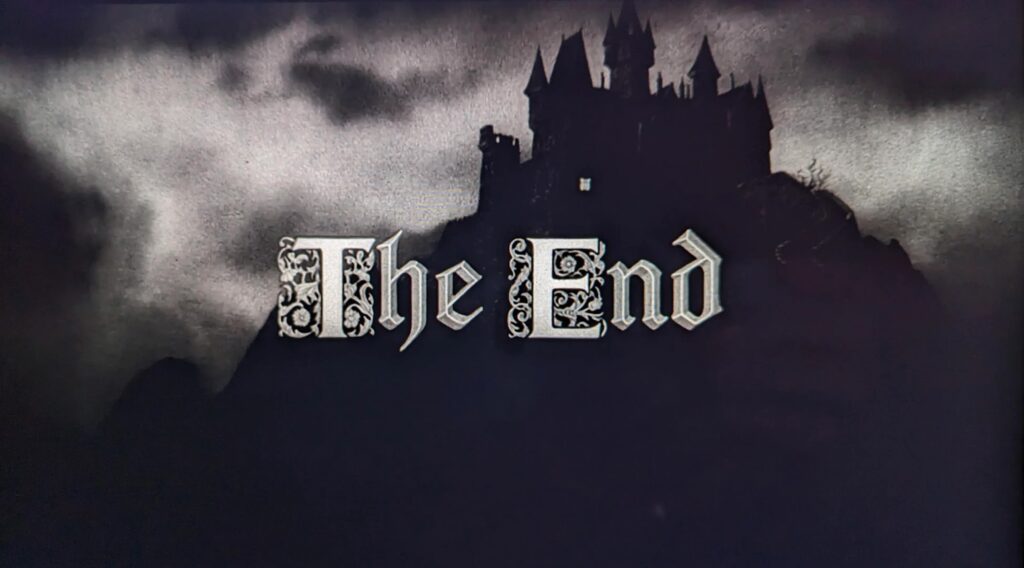
The End. Fin. Game Over.
We begin our journey today, tourists, at the very end. Cliche be damned: it isn’t the journey; it isn’t the people you meet along the way; it’s the destination. And that destination almost always is death. In the horror genre this is obvious — character deaths are usually dramatic fulcrums, sometimes moments of novelty, and often outright astonishing.
But the end in film is so much more powerful than death. We watch movies in part because they end. We know the story is finite and must draw to some conclusion and that conclusion is usually hinted at before we even start. There’s a satisfaction in that, a satisfaction that often eludes us in the real world. Usually we don’t have answers to: How will we end? How will the world end? Are we humans a 90 minute hangout film or a multi-part saga? Do we come back for a sequel?
Welcome to today’s Terror Tourist itinerary called “End Quote”.
Human death is as varied as human life, of course, and is the subject of the vast majority of films across all genres — whether explicit (as in horror) or as a unstated complement or antagonist to the will to live and love (as in romantic comedies). So, yeah, human mortality is the engine of all fiction. But all the different ways people die is an journey too lengthy for us today, travelers.
Instead, let’s consider the end of everything. Apocalypse. Ragnarök. Doomsday. How humans behave in the face of worldwide annihilation is often as dramatically interesting as how they face their own ends. Which is why the theme of apocalypse is everywhere in films — from horror to thrillers to superhero movies to comedy.
When we talk about the apocalypse we usually mean the end of life, specifically. There have been five near-total apocalypses in the history of planet earth. (We discussed the most recent of these — the asteroid that wiped out the dinosaurs — on our Terrible Lizards journey.) Almost all of these near-extinctions were caused by some kind of naturally-induced warming or deoxygenation of the planet. And this is why many scientists believe we are in a sixth extinction event, the only one caused specifically by humans as we have moved carbon safely stored in the ground and have thrown it into the atmosphere, trapping heat and warming our rock beyond the parameters in which life thrives. Fiction, especially in the last decade, has often made the existential threat of climate change its main or at least secondary theme.
But climate change isn’t the only way it all ends. There’s asteroid impact. We know that happens. In 2016 NASA established the Planetary Defense Coordination Office to track potential impact hazards. There are gamma ray bursts coming from far away in the galaxy. This radiation which comes from violently-exploding stars called supernovae would strip away our ozone layer, which I suppose brings us straight back to climate change. Without the sunscreen of ozone life just burns up. Speaking of the sun, that ball of plasma could be our end too — if we make it long enough. As our sun ages and dies it will swell in size and intensity, swallowing Mercury and Venus, irradiating and heating Earth well beyond what life can tolerate. (It may even swallow us whole too before petering out. Impossible to know, but again we’d be long gone before that happened.)
Film sometimes deals with these kinds of natural disaster earthly ends, but more often than not the subject is human-centric apocalypse — most recently viral pandemics. Indeed one way to categorize the history of horror cinema is to look at what threat currently dominates the public imagination. Alien invasion, robots run amok, beasts mutated from atomic radiation, zombies, werewolves, and vampires (which as often as not are stand-ins for some other fear or threat), nuclear annihilation, artificial intelligence that comes to oppose biological intelligence. (We’re about to get a lot of those.)
But what about everything everything. As in the universe itself. Well, compatriots, this is where it gets really weird and little bit scary. There’s a branch of physics that deals with the ultimate fate of the universe. It’s quite a vibrant and not at all morose field of inquiry.

Basically there are four possibilities for how it all ends:
The Big Freeze (also known as Heat Death) is the one that has the most support amongst physicists. We’re coming up on about a century since ol’ Edwin Hubble calculated a cosmological constant which tells us how fast the universe is expanding from the cataclysm that started it all, the Big Bang. And it definitely, provably is expanding (in fact, it’s accelerating which is so bizarre we had to make up an undetected force — dark energy — even to explain it). Everything in the universe seems to be expanding away from everything else as if it all — planets, galaxies, you, me, your cat, that hot dog over there — were all on the surface of a balloon that was expanding. So why is this called the Big Freeze? Well eventually everything will be so far apart that gravitational attraction will no longer bring matter into contact with other matter, so there will be no reactions that give rise to stars. And without stars, well, you get a heat death. The opposite of the Big Bang is indeed a whimper. Dark, cold, and nothing. Everybody dies.
The Big Crunch is the opposite. The idea here is that, yes, everything is expanding, but eventually gravity will win and halt the outward movement. In fact, eventually everything will pull back in closer and closer until it all smooshes down into a dimensionless singularity. Everybody dies.
The Big Bounce is just an endlessly repeating cycle of Big Freezes and Big Crunches, based on the assumption that a dimensionless singularity of all the matter in the universe would then explode (Big Bang-style). This seems to run afoul of quantum mechanics, but the truth is we really have no idea what happened at the very moment of the Big Bang. Everybody dies. Maybe life comes back. But everybody dies again if they do.
Now here’s the scary one: The Big Rip. I mentioned that the universe’s expansion is accelerating and that we don’t really know why. But we do know that the acceleration is constant, which we should be glad for because that constant is just fast enough to expand but not fast enough to destroy local structures like galaxies or stars or us humans. But … technically there’s no reason that the acceleration must stay constant. If it increases (because, for instance, dark matter and dark energy are weirder than we even think) it could be curtains for everything down to individual atoms. The distance between particles themselves would become infinite in a finite amount of time. Riiiiiiiiiiip. The ultimate explosion. Everybody dies.
Apocalypse has been a subject of film since the very beginning. We are lucky to have a restored copy of the Danish film Verdens Undergang (literally “The End of the World”) from 1916. While this is science fiction rather than what we would come to call horror, it definitely points the way. Natural disaster, panic, and general mayhem ensue after a comet passes Earth. And the audience was ready for this having just witnessed Halley’s Comet in 1910 and being in the middle of a world war and global influenza pandemic. Horror movies as a mirror of a society’s fears, even way back at the dawn of movies.
Since then the end of the world has diversified.
You’ve got religious, specifically Christian usually Catholic, apocalypse in films like Legion from 2010, starring Paul Bettany as the Archangel Michael. God has had it up to here with humans and so he sends hordes of angels , including the archangel Michael, to eradicate the human race. Michael goes against God’s willing and finds a pregnant woman in a diner whose child will be the savior of mankind. War ensues. The Archangel Gabriel comes down to battle. I liked this film, especially as it begins with Michael cutting his own wings off to blend in with humans.
Then there’s worldwide apocalypse from the undead. Obviously there are hundreds if not thousands of zombie films but only a minority focus on the zombie infestation as a worldwide phenomenon. I mean, it ain’t an apocalypse if it’s just a few shamblers in your local cemetery. George Romero ultimately produced a series of six films starting with Night of the Living Dead that does slowly show the evolution of a global zombie outbreak. This all concludes in the book The Living Dead completed and published posthumously by Romero’s estate that does a wonderful job of carrying the zombie apocalypse to its logical conclusion (spoiler: all flesh, even undead flesh, rots away to nothing). Other good examples of zombies through a global lens are World War Z from 2013 and the 28 Days Later franchise begun in 2002. (28 Years Later is slated for release next year.)
There’s no lack of pandemic virus movies that wipe out humanity, especially these days. We discussed the movie Black Death on our last Terror Tourist jaunt, but there’s also the under-loved Carriers from 2009 starring Chris Pine early in his career. The pathogen in this film is literally called “The World Ender Virus”. No one seems to be sheltering at home — it’s all a bit of a survivalist wasteland — and really no one wears masks. There’s a serum, but apparently it doesn’t work. Maybe this is where Covid would have ended up if the mortality rate was significantly higher.
Let’s not forget the long tradition of alien monster apocalypse too. I don’t mean films where a single creature comes to earth and wreaks havoc, but actual global infestation. So The Thing is not apocalypse (wonderful though it is), but A Quiet Place (and its sequels) would be. As would Cloverfield and its sequel 10 Cloverfield Lane. (I will not acknowledge that a third Cloverfield film exists.)
Maybe my favorite type of apocalyptic horror is the completely unspecified type. Films that just begin in medias res, with a world already on fire, a color palette that no longer knows Roy G. Biv, and no explanation given whatsoever.Two good examples of this are The Road from 2009 and The Day from 2011. The Road stars Viggo Mortensen, Charlize Theron, and Robert Duvall and is the simple story of a father and son making their way through post-apocalyptic wreckage to the coast of South Carolina. They try to stay away from “bad guys” while the little boy tries to understand the difference between good guys and bad guys in a morally ambiguous world of pure survival. In The Day, we get a ragtag group of survivors (including actor Dominic Monaghan) who come upon a house full of rare supplies in a ruined world. But the food and drink found there is bait and the house is a trap, setting up what becomes a pretty typical though eminently plausible siege movie.
Do these films teach us anything about how we end? Probably not. It’s impossible to know if we’ll take an asteroid to the face or a zombie chomp to the head. But maybe they do show us something, in a very personal way. If there is some apocalyptic event coming it is probably our human propensity for cruelty to one another that will be our undoing. Or selfishness, which is a kind of cruelty. In the end, it probably doesn’t matter what the universe does. What matters is what we do to one another.
And maybe that’s why we are drawn to horror fiction. It’s a glimpse of what we don’t like to dwell on, of how fragile existence really is, skipping to the end of the story to help us understand our current chapter.
OK tourists, let’s end our bummer of a trip here. Go home and hug your family or your pet or your stuffed animal. Hug something and hope the universe doesn’t rip apart.
The Terror Tourist is my occasional segment on the Heavy Leather Horror Show, a weekly podcast about all things horror out of Salem, Massachusetts. These segments are also available as an email newsletter. Sign up here, if interested. Here’s the episode containing “End Quote”:
Eastbound and down
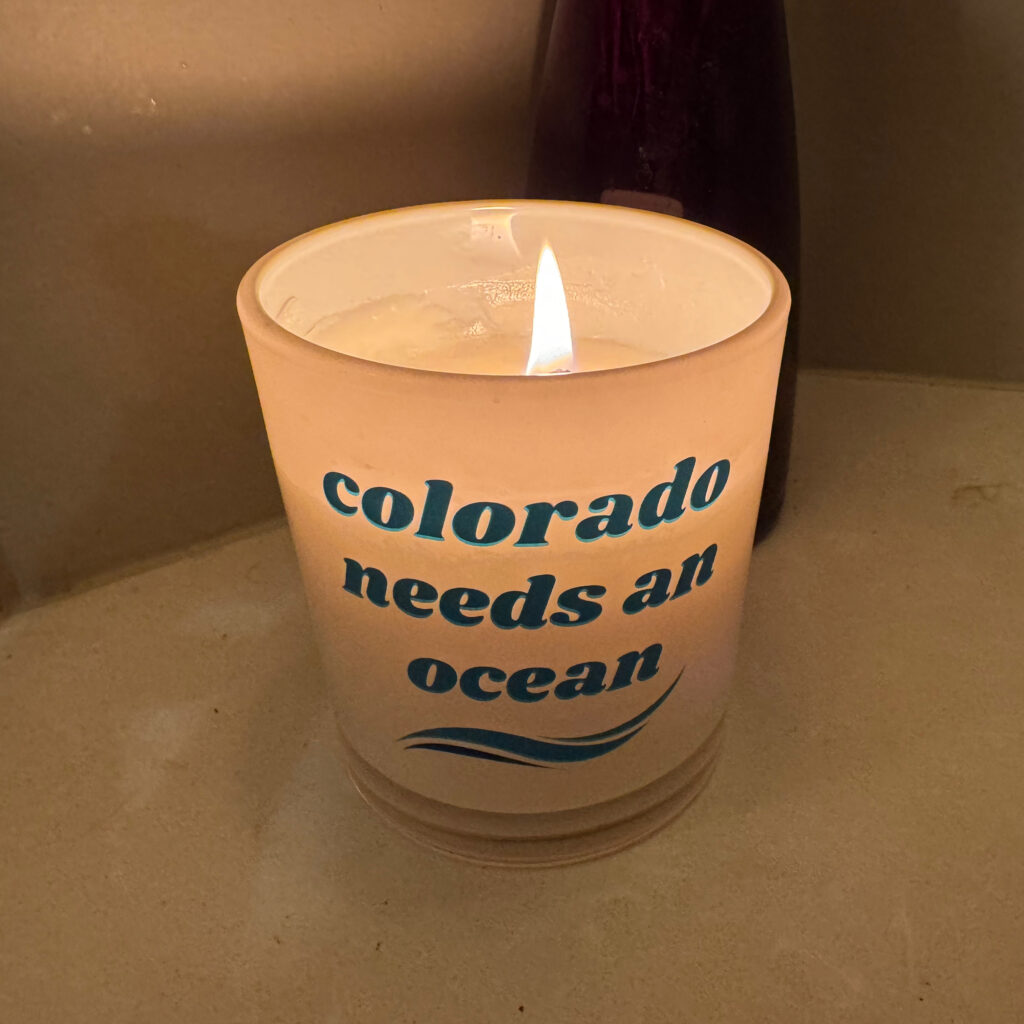
Some more life news from the summer that keeps throwing curve balls.
After eight wonderful years in Colorado we’re moving cross-country for a career opportunity at Robyn’s company mothership in Connecticut, just a few train stops up from NYC. Not sure where we’ll live exactly. If you know the CT coast, advice is very welcome!
It’s tough to leave this amazing, gorgeous state, but the timing is right for lots of reasons, not least of which is that all the kids are off to college and grad school now. Robyn starts her new role out there Oct. 1. Meanwhile, I’ll orchestrate the largest purgation of stuff we will (hopefully) ever undertake. Home will go on the market shortly after that and we hope to see all our local pals before we scoot.
Eastbound and down, from the mountains to the coast!
Here Be Dragons
Prefer to listen to this post?

Whan that Aprille with his shoures soote,
The droghte of March hath perced to the roote,
And bathed every veyne in swich licóur
Of which vertú engendred is the flour;
So begins the Middle English General Prologue of The Canterbury Tales where Geoffrey Chaucer praises the sweet spring rains and the flowers they bring. Whether you consider this collection of stories to be the birth of modern English literature or the death of your will to live in fourth-period high school English 101, it is a quintessential window into the world of medieval Europe.
What you may not know is that it is also the template for the opening of one of the darkest, I’d say even horrific, poems of the 20th century, T.S. Eliot’s The Waste Land from 1922. You’ve probably heard its opening line “April is the cruelest month, breeding / Lilacs out of the dead land …” This is Eliot in the aftermath of World War I and the great influenza pandemic of 1918 reminding us that spring showers also stir up the ground, awakening memories — and things — that might be better left under winter’s numb blanket. It’s easier for a revenant corpse to crawl out of wet earth.
As in The Waste Land the medieval world has informed, colored, and often frightened the present. We love our tales of wizards, dragons, potions, quests, and dungeons. Poems, novels, stageplays, musicals, role-playing games (hey Dungeons & Dragons and Dark Tower!): nearly every modern art form mines the rich ore of the Middle Ages. And cinema is no different, of course. But what about horror cinema, dark cinema? Friends, like pilgrims telling tales on our way to Canterbury, we travel today to a segment called Here Be Dragons.
Medieval and darkness go hand-in-hand. We used to call it The Dark Ages (and many non-historians still do) to distinguish the period from the supposedly gleaming classical world of ancient Greece and Rome and to make ourselves feel good about our supposedly rational, industrialized modern era. This attitude largely came about during the European Renaissance with the widespread rediscovery of the texts of classical antiquity. In the best case, “dark” refers to the relative legitimate lack of historical records during long periods of the 5th through 10th centuries. But mostly it was arrogance: it’s tough to believe you live in an age of enlightenment if you don’t characterize what came before as darkness. Looking at you, Voltaire. Glancing at you, Thomas Jefferson.
The truth is, the medieval period in Europe was anything but dark. It saw the invention of the modern calendar, movable type and the printing press, non-load bearing monumental architecture and stained glass, the modern university, paper money, coffee houses, water and wind mills, illuminated manuscripts (the world’s first multimedia!), all manner of scientific gadgets, the Magna Carta, and Dante’s Divine Comedy — to pick only a few of its brightest spots.
But we’re here to talk about scary things, are we not, terror pilgrims?

Probably the first monsters in a language that would become English come from the epic poem Beowulf, written at the end of the 10th century. Grendel and his even meaner mother are descendants of the biblical Cain (the “first murderer”) and the main baddies — along with a dragon — in Beowulf. It’s a simple story, really. Grendel just doesn’t like fun and merriment. If you’re a Germanic warrior laughing it up with your buddies in the mead hall after a long day on the moors, Grendel is coming to devour you. Beowulf of course has other ideas, killing Grendel with his bare hands, Grendel’s mama with a sword, and the dragon with the help of his buddy. Then Beowulf dies and is immortalized in a poem that would terrorize even more high school students than The Canterbury Tales — and inspire at least eight mediocre films, none of them true horror.
Monsters — especially dragons — figure prominently in the medieval world. As does magic. Both in some ways are methods of dealing with the unknown or the unknowable. Can’t understand the reason all your crops died? A magical curse might explain it. Afraid of the dark reaches of that forest over there? Probably ogres. Have an unexplored area of the vast sea and no real knowledge of what’s there? Just label it hic sunt dracones (“Here be dragons”) because, let’s face it, there are probably dragons there. This preoccupation with the supernatural is the very basis of fantasy, the bedfellow genre of science fiction and horror. But with the scientific method several centuries away — and the notion of fiction itself somewhat foreign to the medieval mind (history and myth were tough to disentangle) — what we mostly take from the Middle Ages is this sense of the fantastic and hoo boy it is often very dark.
There was nothing darker than the big black ink splot that spread out in all map directions from a lake in northeast modern-day Kyrgyzstan. This was The Black Death. Between 1347 and 1351 this pandemic killed nearly 200 million people in Eurasia, leaving putrid swollen corpses stacked like cord wood as far as the eye could see, emptying out towns so completely in some cases they were only rediscovered with the advent of aerial reconnaissance during World War I. “Bring out your dead” indeed!
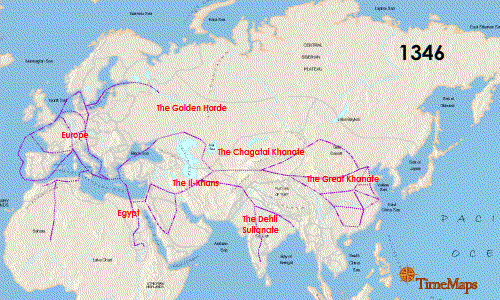
Let’s break down how this killer worked. First there’s the Black Rat, Rattus rattus. These suckers were virile: two black rats mating pretty much continuously for three years could produce three million offspring. They could climb nearly vertical surfaces, survive a fall of five stories, and enter openings a mere ¼” wide. And their jaws could cut through lead. OK gross, but who cares?
Well we care because these rats had fleas, specifically the Rat Flea, Xenopsylla cheopis. This small terror could live for a month even without a host on almost any surface and could jump a 18”. OK gross, but who cares?
We care because these fleas carried the real devilry: the Yersinia pestis bacterium, the actual murderer of 200 million people. This plague bacteria would multiply so ferociously inside fleas’ guts that it would block the digestive tract, hindering a flea’s ability to ingest a meal. Which meant that the dumb flea would just keep biting its target over and over again, regurgitating more bacteria into its host. Yersinia pestis attacks the human lymphatic system, the very castle walls our bodies have built against invading pathogens. But that was just an irony. Victims of the Black Death rarely lived long enough for a secondary infection to finish them off.
Of course, none of this was known in the medieval world. Germ theory did not exist and antibiotics were 600 years in the future.
This triple cheeseburger of death — rat, flea, and bacterium — traveled by over-land trade networks and via advancing armies in the more-than-normally bellicose 14th century. But mostly it traveled by boats plying the Mediterranean and disastrously entering ports like Marseille and Venice. Venice, interestingly, tried to get ahead of the threat by immediately torching ships suspected of carrying plague-infested passengers (not rats — remember they did not know this was the actual payload). Less drastically they would isolate ships and crew for 40 days — or quaranta giorni — which is where we get the modern English word “quarantine”.
So what would actually happen to if you were infected by the black plague? Pretty rapidly you’d develop a stigmata of purple-black swelling in your armpits and the groin (called “bubos” from which we get the term “bubonic” plague). Your lymph nodes would grow so large as to permanently disfigure you, if you somehow survived the infection. (But you’re not gonna survive.) Often the swollen nodes would explode, spewing infected fluid all over. Your last hours would be characterized by bloody vomit, high fever, delirium — an agonizing death. Even before death, infected people would often smell of internal gangrene as their organs started to decay from within. Entire families and neighborhoods would be wiped out in days. And that was the least bad of the three variants of this disease.
Trenches called plague pits were just stacked with corpses until full, then covered with a thin layer of dirt. Heavy rains would often unearth the bodies which would then be feasted upon by rats and dogs, further spreading the bacteria. April really was the cruelest month.

There was no actual way to treat this infection, but people sure tried. Often “doctors” would lance the buboes, draining them, then mixing herbs and human excrement into the wound. This ended poorly in nearly every case. Some sought clean air (believing the disease was airborne). Others went the other route, seeking very noxious air. People would just stick their heads into poop-smeared latrines and fill their lungs. Other supposed cures: drinking non-plague urine, ingesting crushed sapphires, qnd applying flame directly to the skin. This last one — not a ridiculous idea as fleas do not like fire, but there’s the whole burning your own skin thing. And about those plague doctors. The bird-beaked medieval hazmat suits were actually very clever. The thick leather did protect from the fleas and the beaks were filled with herbs and flowers to block the stench of decay. But the doctors saved no one and came to be seen merely as symbols of death. They were often the very last thing a stricken person saw.
Then there were the religious “treatments”. Those who saw the plague as divine retribution for humanity’s sins would parade through the street as flagellants, whipping themselves with ropes studded with hooks. This bloody penance for the pestilence only served as a transmission vector for the disease, of course. You could almost follow the blood-streaked roads that the flagellants marched along to trace the spread of the disease, house to house.
As a sidenote: Poland has the distinction of doing comparatively well during the plague years, mostly because of the institution of an extreme quarantine known as — here’s a great word for you — immurement, literally live entombment — basically bricking someone in, often in their own house, until they died or were clear of the disease. (But also there’s a theory that Poland’s abundance of cats did a number on the bacterium-bearing rats.)
I guess what I’m saying here is, Covid was bad, but it could have been a lot worse. At least we had horror movies to watch during our recent pandemic.
Pilgrims, let’s stop for a moment to rest our beasts of burden, maybe dismount to hoist a flagon of ale, and let me tell you about a few medievally-inspired horror films.
Fans of this show may remember Ken’s birthday pick a few months back, Tombs of the Blind Dead. You really can’t go wrong with this one. Featuring truly scary blind zombie Knights Templar who crawl out their crypts when the sun sets, this 1972 film by Amando de Ossorio (whose last name means alternately “container of bones” or “wolf-hunter” — how badass is that?) is an excellent introduction to the use of medieval setting and lore for a straight-up fright fest. It’s set in the present day with flashbacks to the medieval setting, but the graveyard most of this takes place in might as well be the 14th century.
Let’s go back a little further. 1964 gave us The Masque of the Red Death and The Long Hair of Death, both castle-based costume pieces with very dark themes. The Masque of the Red Death, part of Roger Corman’s octology based on the works of Edgar Allen Poe, features Vincent Price at his most effetely diabolical. Price is Prince Prospero, just a real asshole lord of a castle seemingly immune to the “red death” plague ravaging the countryside. This immunity has been won via a pact with Satan, however. It’s a theme we’ll see again in medieval horror: witchcraft as the only effective deterrent to plague. There are many highlights in this film including a shocking courtly jest that involves dressing a man up as an ape, hoisting him above the masque’d revelers, and burning him alive. WTF Roger Corman? But mainly it’s the spooky personifications of various forms of death, each with its own color, that stand out. Red of course for the immediate plague. Our flea-borne friend black is there, but so is white for Tuberculosis, yellow for Yellow Fever, orange for Scurvy and so on. As the Man in Red tells Prospero near his end, death fears neither God nor Satan. It just is. (As a sidenote, the Poe short story this movie is based on was recently the framework for an episode of Mike Flanagan’s Fall of the House of Usher. It is, in my opinion, one of the best and possibly the goriest. Red death comes to an illegal rave inside an abandoned factory.)
The Long Hair of Death, while not as philosophical as The Masque of the Red Death, makes up for it in Disneyland-esque medieval set design. It features horror icon Barbara Steele as the daughter of a witch burned at the stake; she too is killed by being dumped off a cliff and returns to exact revenge. Classic gothic horror, appropriately in black-and-white. The problem with this movie is that its pacing is as slow as combing through all that long hair of death. 100 minutes is too many minutes of mostly creeping around a castle watching others creep around a castle. Also, somehow I watched a Spanish dub of this Italian film and, while the languages are similar (and of course I had sub-titles turned on), it still was strangely off-putting.
Fast forward to 1992 and Sam Raimi’s Army of Darkness. Say what you will about the weird narrative evolution of the first three Evil Dead movies, you cannot say Raimi aimed low with this one. Except maybe in tone, but then slapstick was woven throughout all the originals. As a plot refresher, the movie picks up directly at the end of Evil Dead II where Ash is somehow whisked from the haunted cabin in the woods back in time to the 14th century with his chainsaw, shotgun, and Oldsmobile. He’s immediately captured, believed to be some sort of warlock and taken inside the castle walls. Instead of the plague being kept at bay outside the castle walls we have the deadites from the first two films. (Yep it’s the ol’ zombies-as-disease metonymy. Classic!) Ash has to retrieve the Necromicon to get back to the present and ends up accidentally summoning an entire army of … darkness. The thing about Army of Darkness is the line it rides between farce and horror, which really is the line ridden by many treatments of the Middle Ages. We laugh at the peoples of the medieval world as dirt-caked idiots or as festooned jesters loping around a court of half-drunk hangers-on. There’s a reason Monty Python and the Holy Grail was so effortlessly funny. Now add Jason and the Argonauts-style skeleton battles. Sounds like an Evil Dead film doesn’t it?
We come now to the actual Black Death … or at least a movie from 2010 called Black Death. Starring Sean Bean, this is the story of a quest to find a village supposedly immune from the plague. Bean plays a Christian soldier sent by the local bishop to bring back the necromancer who is assumed to have made a pact with the devil to secure the village’s immunity. He enlists the help of a young monk who knows the area and who joins the quest secretly looking for his lover. (Monks have needs too!) This is a surprisingly good movie, touching on themes that must have been top of mind to people surrounded by death 700 years ago: What is god in an age of plague? For that matter what is belief in anything? Though it isn’t called out as such — and wouldn’t be proposed for 300 years — what’s really at the center of this film is Pascal’s Wager, the decision theory that plots the existence of god on one axis and belief/disbelief on the other. There are only four outcomes:
- You believe in a god who does not exist. No problem.
- You believe in a god who does exist. Win!
- You do not believe in a god who does not exist. No problem.
- You do not believe in a god who does exist. Uh oh!
There’s only one scenario where you’re truly screwed and this film hinges on that. Plus, spoiler, you get to see Sean Bean drawn-and-quartered on screen. Worth it for that alone!
You know who else comes from the Middle Ages? Our favorite child abductee-turned-impaler-turned-vampire Vlad Dracula! And while most of the hundreds of treatments of Dracula are a mish-mash of semi- or non-historical fabulation, Dracula Untold from 2014 at least attempts to situate the myth in the original medieval history that nursed it. Here we have Vlad, the good-hearted ruler of the vassal state of Wallachia. But he’s up against the Ottoman empire and that’s … a lot. Luckily he’s recently met an ancient vampire in a cave and agrees to be turned and given all the powers that come with that, freeing the old demon in the process. There’s some liberty taken here with received vampire lore (if you don’t drink blood for three days after turning you will revert to your human form — huh?) and a lot of liberty taken with actual history (Vlad did not kill the sultan Mehmed II). But this was a fun flick. More action/adventure than pure horror, but good gore, spooky settings, and some clever touches involving the use of silver. Dracula Untold was intended to retroactively kick off Universal’s interconnected Dark Universe but this was all shelved when Tom Cruise’s The Mummy tanked. (Lesson: don’t put mega-celebrities in horror movies.)
In the end we return to monsters, as close to the themes of Beowulf as I have seen in film. The Head Hunter from 2018 is basically a one-man show of decapitation and alchemy. A warrior who is basically a Viking Nick Offerman lives in a cabin in the woods, mourning the death of his daughter at the hands of a hideous beast, all the while continuing his job as a bounty hunter for the local village. When the horn sounds in town that means it’s time for this guy to trot off to behead another creature. It helps that he has a goopy mixture that heals his wounds somewhat magically. This film starts slow — none of the beheading kills are on-camera, though you see his cabin slowly become a bestial museum of taxidermied heads. And then the monster who murdered his daughter returns and things get good. There’s a super dark twist that rather shocked me out of my brain. Then again, if I were actively thinking of Beowulf while watching this maybe I would not have been as shocked. The Middle Ages, man, they sure were dark.
OK, pilgrims, this is where I leave you. Keep telling your tales. Never stop that really. It’s what separates us humans from beasts. Canterbury is just a couple dozen leagues that-a-way. Give St. Thomas my best. And see you next time on the Terror Tourist!
The Terror Tourist is my occasional segment on the Heavy Leather Horror Show, a weekly podcast about all things horror out of Salem, Massachusetts. These segments are also available as an email newsletter. Sign up here, if interested. Here’s the episode containing “Here Be Dragons”:
Hot scalpel summer
Today is my birthday, usually a high point of summer fun. But this summer hasn’t gone quite as planned.
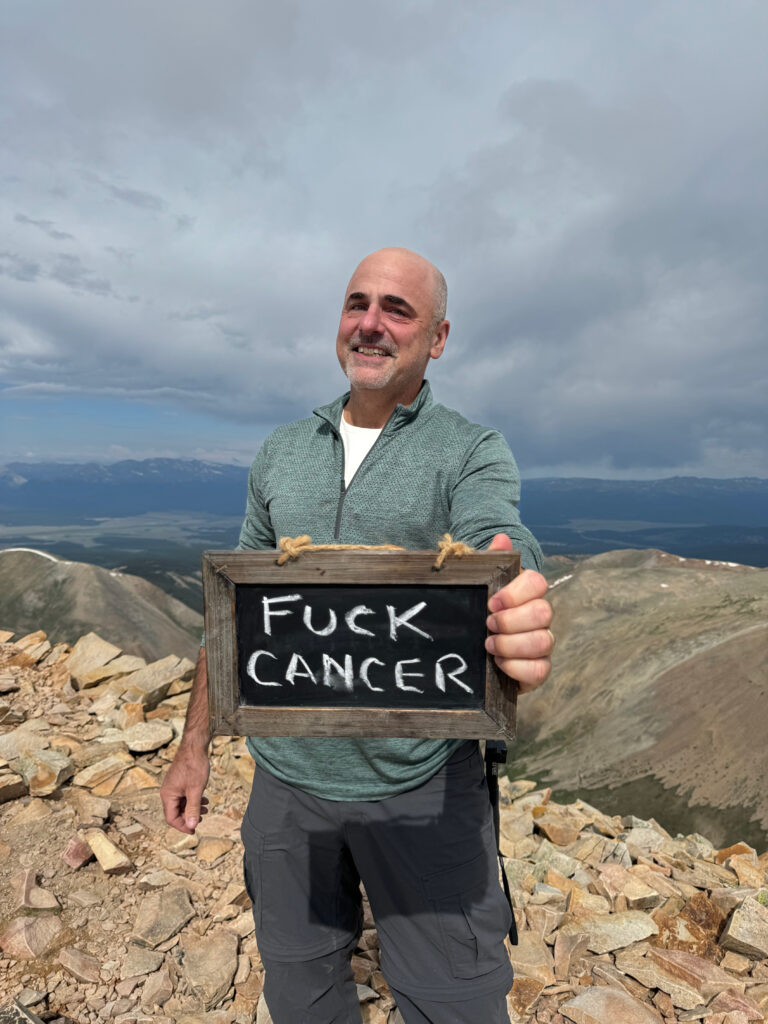
Just a tick up on the prostate antigen scale in my annual physical blood work. “You should get an MRI”, said my doc. Got the test. MRI studied it, “Uh, you should get a biopsy”. Suffered the biopsy. And finally the urologist: “You have cancer”. Quick like that.
Last summer was a lot different. Took an incredible 3-week roadtrip through the American West, vacationed with friends in Turks & Caicos, celebrated my birthday underwater in Curaçao. But this is the ebb and flow of life. Last year riding the surf; this year dragged out by the riptide.
The lesion was small, localized only to the prostate, and treatable, but it was still shocking news. We moved fairly quickly and this past Monday I had the misbehaving cells (and mostly useless host organ) surgically removed. Recovering now, hopefully back to full strength soon with undetectable antigen levels after that. Happy to talk more with anyone about specifics, options evaluated, the scalpel-wielding robot, and such. Hit me up, middle-aged men!
Not calling it a W just yet, but it is late in the game and I’m up by a lot — mostly because of incredible teammates: family near and far, friends, friends who are urologists, friends who beat me at tennis on the regular, and colleagues. You know who you are and how much I appreciate you. ♥️
Oh look, the riptide is dying down. Think I’ll swim back to shore, have a birthday cupcake, and plan some new adventures.
Terrible Lizards
The Terror Tourist is my occasional segment on the Heavy Leather Horror Show, a weekly podcast about all things horror out of Salem, Massachusetts. These segments are also available as an email newsletter. Sign up here, if interested.
Tourists, our journey today takes us to a place but also to a time — approximately 66 million years ago. We’re headed to a day, actually — the most horrifying and deadly single day in the history of life on our planet. Grab your snacks and lots of water. If you have a Kevlar body suit, pack that too. OK let’s go!
We are off the coast of Mexico, just to the northwest of a small fishing village called Chicxulub on the Yucatán peninsula. It is the end of the Age of Reptiles. Humans do not exist yet and won’t for 65 million years or so.
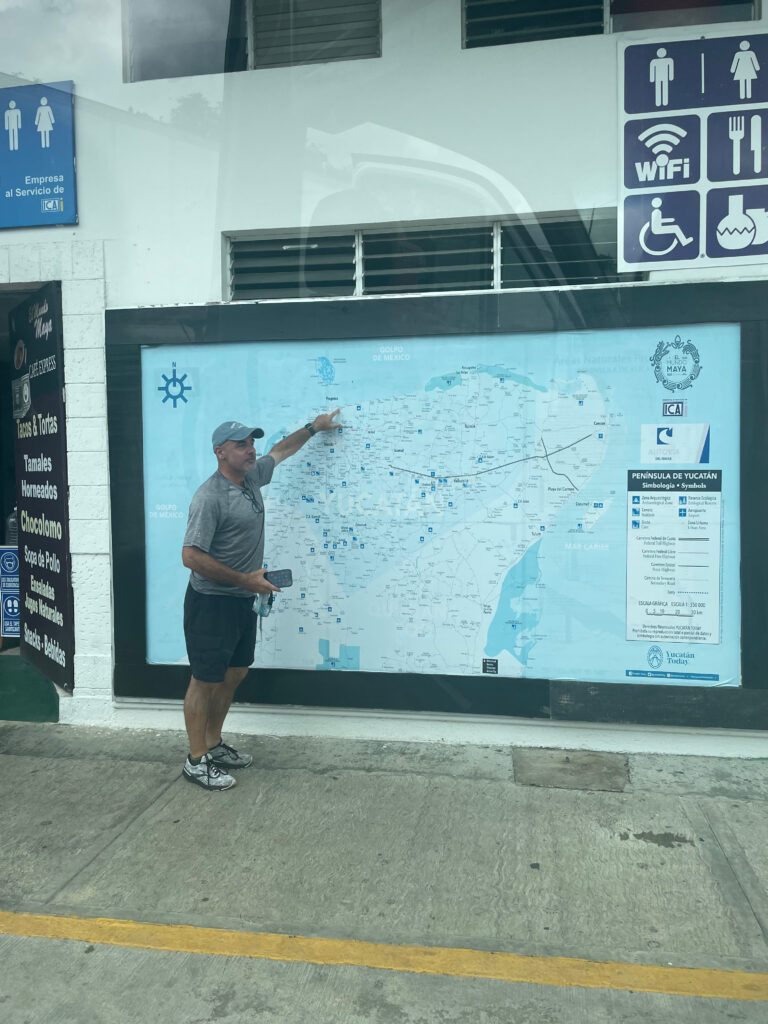
Dinosaurs dominate every continent of Earth and have for several hundred million years. Some of the most popular dinosaurs in our current public imagination are here now — T. Rex, Triceratops, Ankylosaurs (the armored ones), Pachycelphalosaurs (the one with the giant ramming dome on its head), and Velociraptors. They are all around us, whether we see them or not; they see us.
We look up and a light appears in the northeast sky. It’s becoming larger and larger by the minute. It’s a meteor — a chunk of the early solar system that just happens to be on a collision course with Earth. Meteors had collided with earth before and will again, but this time the chunk is large (more than 6 miles across) and fast (traveling at about 12 miles per second). In the blink of an eye the meteor slams into the shallow ocean with the energy of 72 trillion tons of dynamite.
All horror, fictional or real, pales in comparison to what comes next.
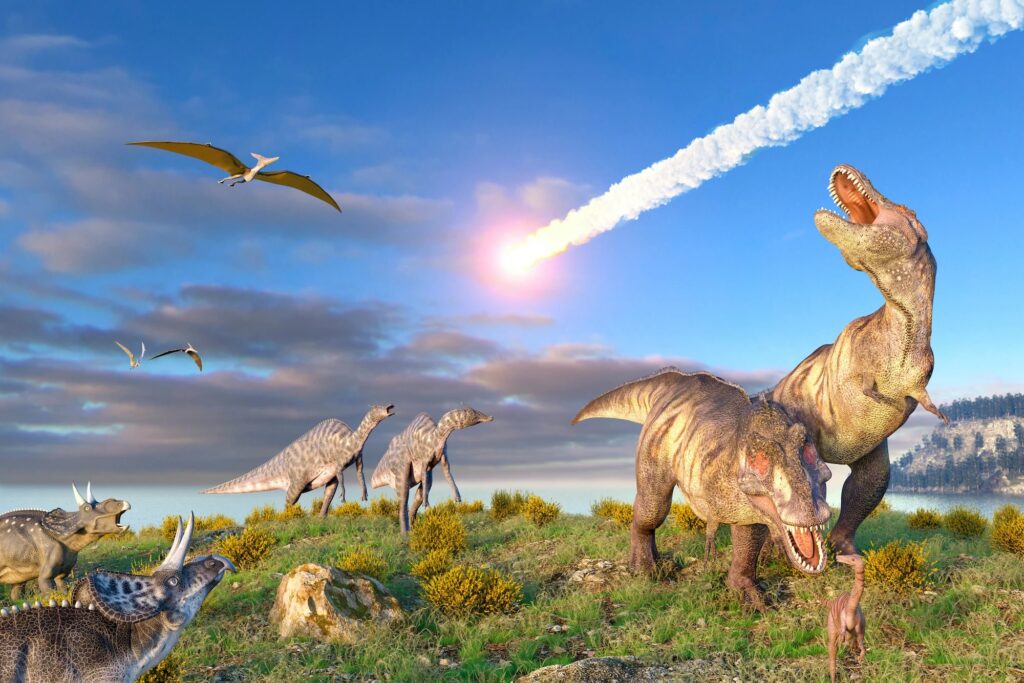
Everything within 100 miles of the impact is instantly vaporized. Life anywhere within 1000 miles of the impact zone is destroyed only slightly less quickly by 620 mph winds, 330’ tall mega-tsunamis, and earthquakes whose magnitude would not even register on our current Richter scale. Dinosaurs here are the lucky dead.
The impact ejects 25 trillion tons of sea floor into the atmosphere. Hot dust, ash, steam, and rock are tossed so high that some achieve escape velocity and scatter throughout the solar system (giving rise to the not entirely implausible theory that there could be dinosaur fossils or even mummified body parts on the moon). But most of that 25 trillion tons of junk falls back to earth, heating to molten temperatures on re-entry. And this is where the real hell on earth begins.
The infrared radiation and heat generated by all this returning material cooks the air globally (our planet’s rotation spreading the heat evenly like a giant earth-sized rotisserie). The air itself is on fire. Basically if you are a living creature and you can not burrow deep into the earth or dive deep underwater you are incinerated by the scorching air. And let’s face it, most dinosaurs are large and not adapted for digging or submersion. Wildfires ignite — only further raising ambient temperatures. This happens all in the course of the first day, nearly everywhere on earth.
Some life survived, obviously, or we wouldn’t be here as tourists. But even most of the initial survivors would eventually perish. All the smoke from those fires only adds to the carbon-rich gunk that is now lodged in the high atmosphere, creating a years-long “impact winter” that basically blots out the sun permanently. Photosynthesis stops so plant life ceases. Without any food herbivorous creatures die. Then any carnivores which eat the herbivores die. In the end 75% of all life on earth is wiped out. A few of our ancestors, tiny burrowing mammals, thankfully make it past this extinction boundary and here were are, ready to talk about dinosaurs in horror movies.
Today’s itinerary is called Terrible Lizards, the literal meaning of the word “dinosaur”.
Dinosaurs are perfect for the big screen in so many ways. They are, of course, some of the largest creatures ever to inhabit the earth. But they also fascinate because of the length of their dominance atop the food chain — and their cataclysmic demise. But most of all apex dinosaur predators are scary. There’s a reason the T. Rex’s arms were so laughably tiny. With a neck so strong and teeth so long the head was all that’s needed to do what a T. Rex does so well: rip its prey apart.
Cinemagenic and terrifying! So obviously there are hundreds of dinosaur-based horror movies, right? I am here to regretfully inform you, fellow travelers, that the answer is no, no there are not. Dinosaur horror, such as it exists, seems to bend toward action-adventure, thrillers and even comedy. There are very few straight-up horror movies involving dinosaurs.
Certainly creature features owe much of their power to our culture’s knowledge and latent fear of dinosaurs. From the Black Lagoon to Godzilla reptilian predators have been a staple of horror and horror-adjacent films for almost a century. But these baddies are almost always not quite dinosaurs. Take the Sleestaks from the television show Land of the Lost: reptilian, sure, but also humanoid and even insectoid with their giant unblinking eyes. Are they scary? This tour guide child of the 80s is here to say: you bet they are. Are they dinosaurs? Not really. The Loch Ness monster — centerpiece of at least one not-great group watch on this show — is, if anything, a plesiosaur. We won’t get into it here, but these large marine reptiles are not dinosaurs, frightful though they are. The Megalodon? Not a dinosaur either.
And yet, dinosaurs have been the subject of filmmaking almost as long as it’s been a medium. From their first depiction in 1905’s Prehistoric Peeps to the seminal model animation of 1925’s The Lost World up through the 1993 blockbuster Jurassic Park, dinosaur films are a massive part of the history of cinema. There’s even a dinosaur museum in the middle-of-nowhere Utah called, uh, The Dinosaur Museum, with a truly impressive permanent exhibition on the history of dinosaurs in film, including a physical recreation of how stop-motion and forced perspective were used to achieve their presence in early film. If you’re ever in Blanding, Utah you should visit.
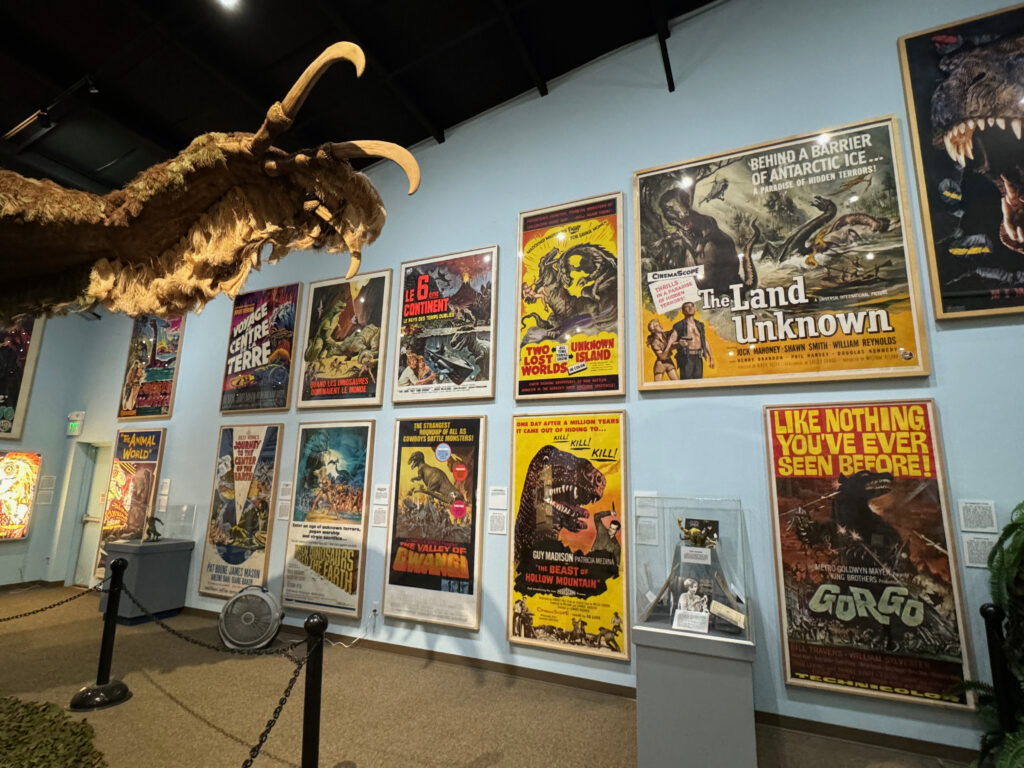
So why so few true horror movies with dinosaurs? I have a few ideas.
- The size and complexity of dinosaurs make them difficult to portray convincingly. Doing so requires ample budget, something our beloved genre often lacks. For much of movie history the technology to portray dinosaurs well simply did not exist widely. Claymation and stop-motion only go so far.
- Dinosaurs are not great villains. Big and reptilian doesn’t automatically mean scary. Many dinosaurs just munched on treetops. Even the Rex and raptor were just doing their thing, looking for prey — like a lion or a wolf. They wanna eat, that’s their motive. Concerning if you’re a delectable human, sure, but not horrifying.
- Related to this is that many people grow up loving dinosaurs. They are a staple of children’s programming. Many people have a favorite dino. Few children have a favorite serial killer or zombie. Those who do grow up and participate in podcasts about like this one.
So, yeah, almost zero horror movies involve dinosaurs. Almost, because there are plenty that attempt it, but they are never played completely straight. Or, the terror is not sustained for the entire film. The original Jurassic Park is a great example. The scenes of running from a rampaging T. Rex or hiding from door-handle-operating Velociraptors is without question frightening. But this is the punctuation rather than the grammar of the film. (It could also be the music.) And we may have Jurassic Park to blame for the relative crap that exists today calling itself dinosaur horror. That movie’s advances in CGI inspired legions of filmmakers to pop dinosaurs into situations that would otherwise have been cost-prohibitive. But without a blockbuster Hollywood budget nearly all these films become laughable the moment the CGIsaurus appears.
Let’s visit a few of these films, my tourist friends.
1993 wasn’t only the year of Jurassic Park. It was also the year of Jurassic Park knock-offs. Enter our man Roger Corman. His film, Carnosaur, was meant to directly compete with and capitalize on the marketing machine behind Spielberg’s film. Roger Ebert called it the worst film of 1993. It’s probably the best dinosaur horror film I have seen. Make of those two statements what you will. Featuring Diane Ladd and a young Clint Howard, Carnosaur’s main plot point is the use of infected chicken eggs, which contain a lethal virus that impregnates women with dinosaur embryos, to exterminate the planet of humans and repopulate it with dinosaurs. There are, alas, almost more chickens in this film than dinosaurs. And being a Corman flick the actual dinosaur effects here are all puppets and animatronics — not horrible for what they are, but still pretty bad. Ironically, Carnosaur gets the science a bit more right than even Jurassic Park. The main baddie is a Deinonychus, a more accurate depiction than Jurassic Park’s Velociraptor which is in actuality is the size of a turkey, partially feathered, and did not hunt in packs, but it has a cooler name. The climatic battle between a T. Rex and a guy operating a front loader is straight out of Aliens. Carnosaur spawned four sequels/knock-offs, almost all using the same models and/or footage from the original because … Roger Corman.
One year later in 1994 we get perhaps the strangest entry in this tiny sub-genre, Tammy and the T-Rex. This film answers the obvious question: what if Frankenstein but with a dinosaur and set in a high school? Featuring Denise Richards and Paul Walker, Tammy and the T-Rex is about a teenager killed by bullies whose brain is then implanted in a robotic Tyrannosaurus rex by a mad scientist. The bullies get their due, naturally, at the disproportionately small hands of this cyborg Tyrannosaur. This is a bizarre movie, but it’s fun and absolutely not something you’ve seen before. In 2019 Vinegar Syndrome restored much of the original, intended gore removed upon release. Find that one for the full experience.
Hands-down the winner for best title in all of dinosaur horror is 2017’s The VelociPastor. You know what you’re in for even just seeing the title in print as the P in “velocipastor” is intercapped uppercase to make absolutely certain you understand the play on words. The VelociPastor is many things, but subtle isn’t one of them. Because none of it makes any sense whatsoever I’ll just lay it all out as a sequence of words: distraught priest being pursued by ninjas finds an enchanted artifact that turns him into a dragon (which is really a dinosaur) who then sets about killing criminals with the assistance of his prostitute sidekick. For what it is, this movie succeeds. And what is it exactly? A $36,000 film that uses an actual discarded high school dinosaur mascot costume for its protagonist. There’s even a scene of a car explosion where no car explodes and a caption reads [insert VFX here]. Sometimes when you have a title this good the movie it’s attached to doesn’t actually matter.
Claw from 2021 seemed promising, as it is built on classic horror tropes. A stand-up comedian and her agent are driving through the American west and have car trouble. They end up stranded in a “ghost town”, one of dozens of tourist attractions that prop up the facades of buildings from a forgotten past. Good start, yeah? They meet the proprietor of the ghost town, a gent named Ray, who also collects dinosaur fossils. Turns out there’s a living raptor on the property as well — we’re never told how or why — and almost the entirety of the remainder of the film is just an extended scene of the protagonists hiding from the beast in and around a camper trailer. But wait, there’s almost a one-year-later epilogue that involves a dream sequence and a T. Rex nowhere near the ghost town. Claw goes to show that the pieces to make real dinosaur horror exist, it just didn’t put them together very well.
I could go on, but you deserve better than all this, my travel buddies. If you need more for some reason, just search any film database for the word “Rex”. Ebola Rex, Poseidon Rex, Anonymous Rex, Theodore Rex. All lizards, all terrible. Dinosaur Prison, The Dinosaur Project, Hatched, Area 407, and last year’s 65 with Adam Driver. Not worth your time or, frankly, worth the legacy of the amazing creatures they depict.
If this is your thing, my recommendation is to go back earlier — discard some of your need for pure horror — and watch more sci-fi entries like Dinosaurus (1960), Valley of the Gwangi (1969), The Land that Time Forgot (1974), or Planet of the Dinosaurs (1977). These aren’t masterpieces but they aren’t parodies either. Best of all: zero bad CGI.
And if you are a filmmaker this is your opportunity. Which one of you will make the first truly great dinosaur horror film? We have the technology and the more science teaches us about dinos the more novel story lines abound. Let me leave you with two ideas, royalty-free:
- For real-world crazy, creationists can’t be beat. Did you know that one of the centerpieces of their belief is that dinosaurs and humans existed side-by-side? There’s even a museum in Texas that purports to show early human footprints next to dinosaur tracks. This is of course complete bullshit, but … what about a horror movie that somehow plops creationists into the world 66 million years ago? They look for fellow humans, find none, are hunted by dinosaurs, and ultimately take a giant meteor to the face. I’d watch that.
- Fossil hunting itself presents plenty of great opportunities for horror. There’s secrecy about and danger all around the dig sites (super hot, dangerously dry, poachers, snakes, bears, etc) and tons of potentially lethal digging and blasting equipment. Someone give me a serial killer paleontologist. Living dinosaurs not even required!
OK everyone, I’ll leave you here. Don’t forget to tip your tour guide. We look forward to seeing you on our next journey.
Land of Fire and Ice
The Terror Tourist is my occasional segment on the Heavy Leather Horror Show, a weekly podcast about all things horror out of Salem, Massachusetts. These segments are also available as an email newsletter. Sign up here, if interested.
Greetings travelers! I hope you are prepared for an adventure — properly dressed in layers, extremities covered, feet shod in crampons — because we are going to Iceland. I’ve compiled an itinerary by watching every horror movie ever to come out of this small island nation. But before we take that excursion let’s pack our bags with some context.

Iceland is Hawaii upside-down, a largely self-contained ecosystem in the middle of a vast sea perpetually remaking itself directly above a hotspot vent in the Earth’s mantle. Like Hawaii Iceland has been a prize of sea-going conquerors through history: the Vikings of course, but also the kings of Norway and Denmark, and even the occupying forces of Britain and the USA during World War II.
Both geologically and culturally Iceland straddles North America and Eurasia. In addition to being the morphing volcanic crown of the mid-Atlantic, Iceland exists right on the boundary of two tectonic plates, just kissing the southernmost boundary of the arctic circle, and slowly moving away from their one-time embrace. This position between two worlds enabled Icelander Leif Erikson to discover what would come to be called North America 500 years before Christopher Columbus — though Leif and his compatriots left behind only tool shards rather than genocidal European pathogens.
Icelanders know how to live between worlds. For example, some 35% of people in Iceland believe in elves. Called Huldufólk, these “hidden people” appear human but live in a parallel world overlaid on our own, popping in and out of our reality at will. How can you tell them from us? It’s subtle. Huldufólk have a convex rather than concave philtrum below their noses. So, yes, I spent much of my recent trip to Iceland staring intently at people’s upper lips. Awkward and uncomfortable for all parties involved, but this is my responsibility as the director of this terror travel agency.
Iceland hosts all kinds of supernatural creatures, most of which you will find in their amazing literary legacy known as the sagas. Part history, part genealogy, part mythology, these tales are unique to Iceland and date to the 9th through early 11th centuries. If interested look up Snorri Sturluson, Iceland’s revered national poet and historian. Actually just say his name — Snorri Sturluson — and feel a smile come to your face.
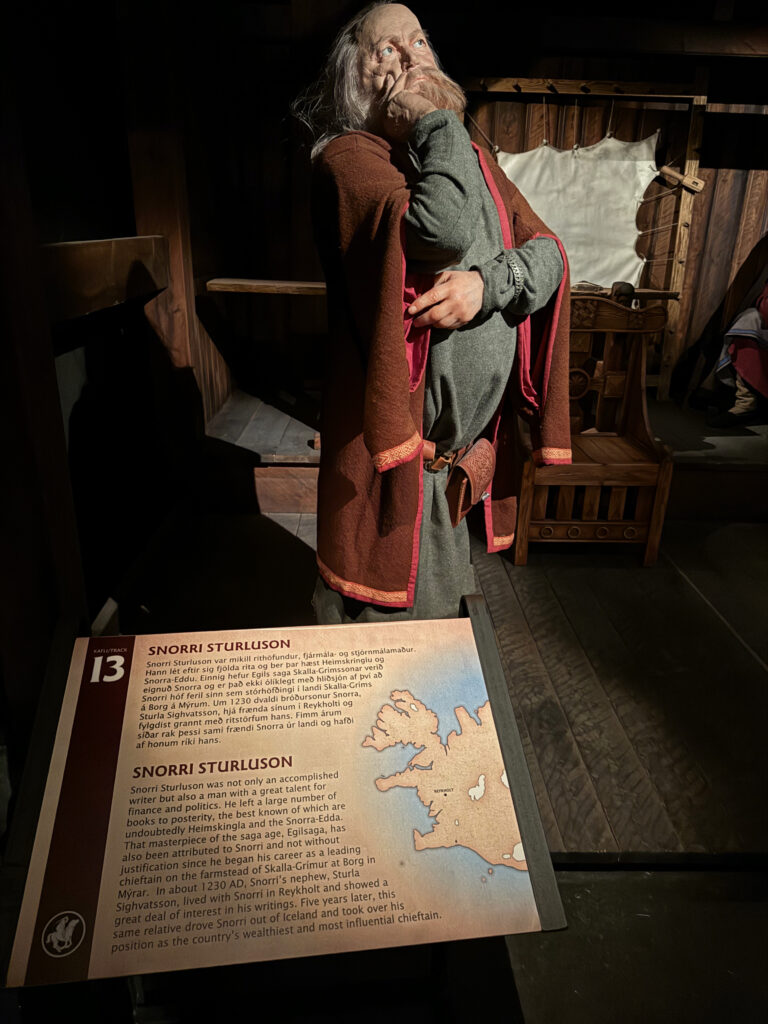
The sagas feature draugr what we’d call “ghosts”, the aptrganga literally “again-walkers”, the haugbúi literally “mound-dwellers” as well as trolls, giants, witches, sorcerers, and devils. All of these nightmares fall into the category of reimleikar or “hauntings”. Interestingly what often gets translated as “ghosts” in Iceland are actually corporeal. These things have physical bodies and can do physical harm. There’s also the legend of the Útburður — literally the “out-carried”, babies left outside to die of exposure — unwanted because of rape, incest, or conception out of wedlock who return as ghosts. That one kinda messed me up.
So you pause here with me on our journey, travelers, and ask the obvious question: Are all the scary things in Iceland fantastical? Aren’t there any humans to be feared? The answer is: not really. Iceland is consistently ranked the #1 safest country in the world. (The USA comes in a 131 out of 163.) And there is honest-to-Odin only a single known serial killer in all of Icelandic history. In the late 16th century a farmer named Axlar-Björn was convicted of killing 9 people, mostly boarders and farmhands, variously by axing them to death or drowning them. He likely killed more than 9 as a search of his farmlands yielded many more bodies. Ol’ Axlar was executed for these crimes by first having his limbs shattered with a sledgehammer, then his privates severed and tossed to his pregnant wife, then he was beheaded and dismembered — each severed body piece receiving its own display on a stake. His children weren’t much better people, frankly. Years later the last words of his son who was being executed for robbery and murder were “If I were free I would kill you all and eat your flesh.”
But honestly other than that particular family, there isn’t much to be afraid of in Iceland … except Iceland itself. That is, literally, the ice and the land.
Let’s start with the darkness. Like all places as far north (or south) as Iceland much of the year is very dark. The sun barely peeks above the horizon in the winter. It’s a gloomy vibe, not quite pitch, but certainly unsettling — like a permanent eclipse. As a sidenote, this seasonal darkness may explain why Iceland and Finland have the highest percentage of metal bands per capita in the world. And not just Viking metal. This is perhaps obvious if you have ever tried to pronounce an Icelandic word as basically every other term in an Icelandic dictionary would make a great black metal band name. And Iceland officially does not allow foreign terms in its language. So when a new concept emerges, like the computer did in the 1940s they make one up. In this example, they joined the term for number (tala) and witch-doctor or prophetess (völva) A computer is thus a number witch-doctor and the new word is … Tölva. Which is my last name. I am, unfortunately, 0% Icelandic.
But let’s get back on the path. Iceland is called the land of fire and ice and that’s no marketing slogan. Well, actually it is, but it is for truth. There are more than 30 active volcanos ripping their own scabs from the land. At any given time quite a few of these are actively spewing lava or scalding mud and ash. In fact, when I was there a few weeks ago we witnessed a crater field which had been dormant for a few months fissure and begin erupting right before our eyes. Icelanders live with this peril, indeed embrace it as the source of many good things, but not incautiously so.
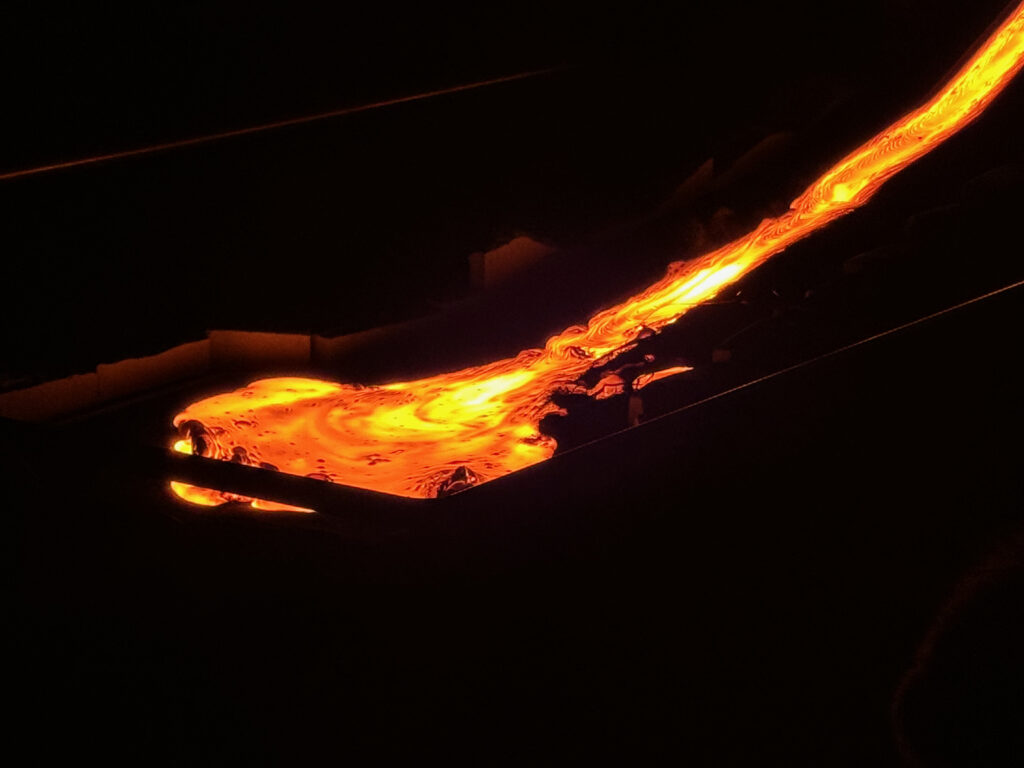
In fact what worries Icelanders more than volcanos is what sits on top of them, which is usually glaciers. We all know that our planet’s glaciers are melting at a worrying rate, but detonate a geothermal bomb underneath them and, well, they melt really quickly. In an eruption all that molten rock and ash mixed with millions of cubic acres of now-melted ice cap hastily seeking lower ground will ruin your day right quick. And Iceland’s biggest city Reykjavik sits on one of the most volcanically active peninsulas of the entire island. Iceland would not exist without vulcanism and one day, hopefully later rather than sooner, it will likely cease to exist because of vulcanism.
Then there’s the sea itself. The North Atlantic is an angry place. Got an unsinkable ocean liner? It’ll take care of that. The waters are rough, rogue waves are commonplace, the whole thing is plied by an unruly fleet of icebergs constantly calving off from increasingly-unstable glaciers, and the water, naturally, is freezing. Typically if you find yourself bobbing in said water you will live as many minutes as the number of degrees celsius the water is above freezing. So let’s say you were lucky enough to spill over into a warm patch of ocean, say 5°C/40°F, you’d live for approximately 5 minutes. As a darkly humorous aside, there is a huge culture of swimming pools (indoor obviously) in Iceland. This is a legacy of a realization in the early 20th century than an above-average number of sailors were drowning due to incidents just offshore that otherwise would have been close enough to swim to safety. Thus Iceland made it mandatory — which it is to this day — to be able to swim. It’s part of childhood educational curriculum. I pause to wonder why the people of a nation literally surrounded by the ocean, criss-crossed by waterfalls, and in a constant state of glacial melt sogginess wouldn’t have previously thought knowing how to swim was important, but who am I to say?
One last way that Iceland wants to kill you. All the aforementioned geological instability produces a lot of earthquakes. No need to delve into that particular kind of calamity except to note that Iceland is one of the only places on earth where there is a non-zero chance of being crushed by tectonic plates underwater. The Silfra Fissure in beautiful Thingvellir National Park is a glacial lake that straddles the cleft made as the North American and Eurasian continental plates slowly move apart. It’s a popular snorkeling and diving site where you can touch both plates at once. And if there’s an earthquake while you’re down there, welp, that’d be a pretty great way to go, no? Reclaimed by earth itself. And yes, it was cold in that drink: 35°F. If not for our drysuits my son and I would have spent our last 1.5 minutes together.
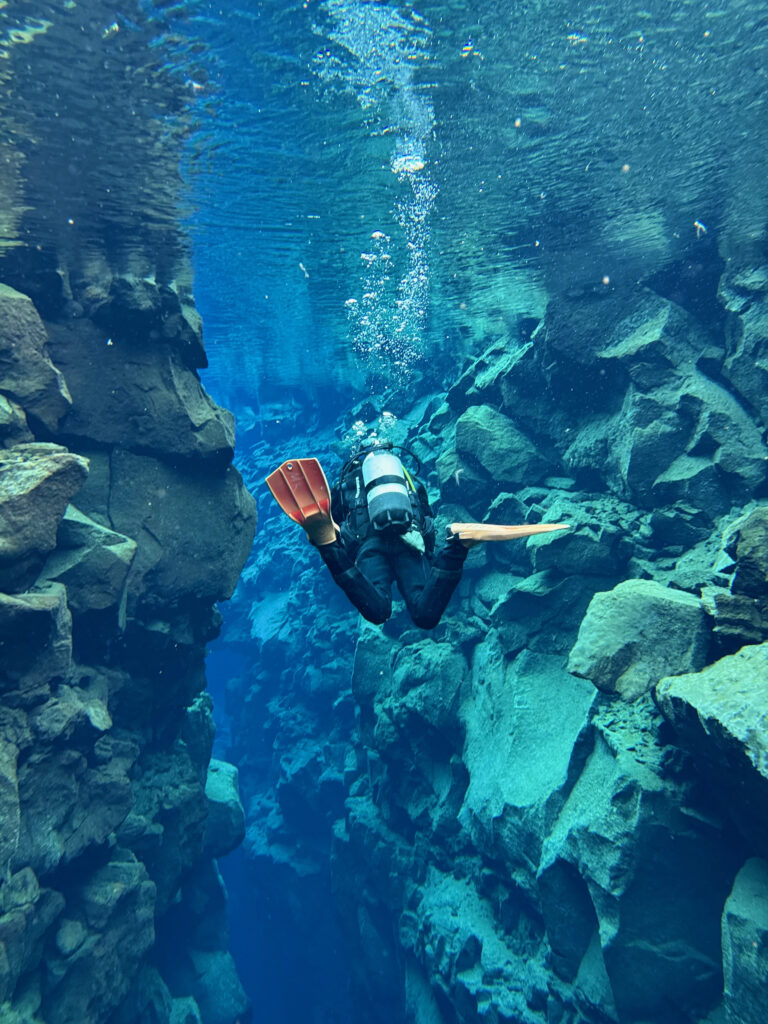
OK let’s catch our breath on this hike. In and out. In and out. We’re warm, we’re dry, nothing is erupting on us, let’s move on … to horror movies.
Here’s the thing. Given the landscape, Iceland seems like the perfect place for the horror imagination to run wild. Match a hostile environment with centuries of ghost storytelling tradition and the fact that it’s exceedingly easy to become isolated in such an unpopulated place. But honestly horror just isn’t a huge genre in Icelandic cinema. This may simply be due to size. Iceland just doesn’t produce as many movies as, say, the much larger, much more populous countries of Sweden or Norway.
But this is an opportunity for our itinerary, my weary travel buddies! It occurred to me that I might be able to watch the entire output of a single country’s horror film industry. And that’s exactly what I attempted to do over the last few months. Did I succeed? Well … I watched 11 films, but there are a few festival-only shorts, made-for-TV specials that were never rebroadcast or put online, and at least one film which does not exist with any subtitles or dubbing. So, no, I did not see everything. But I saw almost everything and certainly the best things.
First a note on Jóhann Jóhannsson, the peerless Icelandic composer. (His albums Englabörn, IBM 1401, and Fordlandia will change your conception of what classical music can do.) For our purposes though it should be noted that Jóhann wrote the music for the 2018 revenge bloodbath Mandy. It was his final work prior to dying of heart failure at the age of 48. If you’ve seen Mandy you know how crazy its score is. Panos Cosmatos, Mandy’s director, said of Jóhann “[he] went above and beyond, and I suspect to the limits of his sanity, to make the music for this movie.” Growing up surrounded by Iceland’s black metal music scene and having seen and loved Cosmatos’ previous film Beyond the Black Rainbow, Jóhannsson reportedly pled his case for the job saying “Holy shit, you guys are making something … that is in this nightmarish, psychedelic metal world that I was born and bred on”. Cosmatos hired him and said “I basically wanted it to feel a little bit like a disintegrated rock opera, and Jóhann responded to that. We developed a kind of shorthand almost immediately.” The movie was made, Jóhann died tragically, and now Cosmatos says he cannot bring himself to revisit the soundtrack. “I’m almost afraid to listen to it in isolation, because I still have emotional strands attached to it.” Have a rewatch — or more specifically a re-listen — of Mandy if you want to get a real flavor of Icelandic horror genius.
These 11 films are representative both of the thematic diversity of Icelandic horror and in various ways are uniquely Icelandic. Here we go!
Reykjavik Whale Watching Massacre (aka Harpoon, 2019)
This splatter shlock features a cameo from Iceland’s most famous — perhaps only legitimate — horror movie celebrity: Gunnar Hansen. That’s right: Leatherface. (Gunnar’s family moved to the USA when he was 5-years-old and the rest is history.) In this movie I learned that there are good reasons Leatherface was non-verbal in the original film only some of which have to do with the story itself. Hansen is just not a good actor. The plot finds a group of tourists stranded on a malfunctioning whale-watching boat who are picked up by a bunch of homicidal whalers running what amounts to a floating torture chamber. The whole thing is weirdly xenophobic with lots of uncomfortable stereotypes about the different nations of the tourists. There are some decent kills, including with harpoons, but this movie goes on for a least one act too many. It was already overly-long when it occurred to me that I, the viewer, had not seen a single whale. Fear not: stock footage to the rescue! There is indeed one kill from an orca. If this were shot on film you could probably see where this scene was stapled onto the existing celluloid reel.
Tilbury (1987)
This made-for-TV movie is classic WTF-did-I-just-watch? Based on the folk belief in a tame imp called a Tilbury which would suck milk from other people’s cows, return to its owner (almost always a woman), and then disgorge butter for her. When not stealing milk for re-processing the Tilbury feeds from a nipple inside its owner’s thigh. Oh and these imps are brought to life using communion wine served between its owner’s breasts. With that all as preface, it’s no surprise that this the visuals in this movie are vile. The story follows a modern day Tilbury conscripted into the British occupying forces during WWII.
Thirst (2019)
Billed as “MOST BAD-ASS GAY VAMPIRE ZOMBIE SPLATTER MOVIE YOU’LL EVER SEE…EVER”. Not four minutes into this film — which I’ll note that I watched on an airplane — we get screaming, gory vampire fellatio. This is so not a movie to watch on an airplane, certainly not with strangers next to you. It basically follows an elderly vampire who kills by ripping his victims’ penises off. Clearly this is done for comedic effect. At one point he even eats a penis in a hot dog bun. Not surprising when you consider that a top ten tourist attraction in Reykjavik is the Iceland Phallological Museum — a gallery of preserved penises and penis ephemera from various species. Thirst itself is a decent film and super gory, particularly a scene when a person is ripped in half top to bottom with the vampire’s bare hands in the snow. It’s part detective story, part commentary on Christian cults. But mostly it’s just goofy fun.
Lamb (2021)
Maybe the best movie I watched on this journey. It’s quintessential folk horror and apparently the highest grossing Icelandic film (of any genre) to date. Featuring Noomi Rapace who you may have first seen in Prometheus. Set on a farm in rural Iceland the style is ultra-realistic, beautiful and minimal, with no soundtrack. Noomi and her husband nurse an ill, hybrid newborn lamb to health, keeping it indoors, nursing it with a bottle, swaddling it to sleep in a bassinet. Hybrid you say? Yeah, it’s half human, but not like a centaur, just some of its limbs. It is bipedal though which is disturbing enough having a toddler with a lamb head running around the house. The lamb’s mother keeps showing up looking for it. Noomi has grown attached to her new “baby” so she kills and buries the mother lamb. This turns out to be a very bad idea. An excellent movie, but don’t expect to leave this movie with a warm fuzzy feeling.
Graves & Bones (2016)
This film is partially a response to the financial crisis of 2008 which hit Iceland abnormally hard — three banks failed, the largest economic trauma to any country relative to size. It opens with a little girl, Perla, stopping the swaying of someone we later find out was her father who has hanged himself. Gunnar is awaiting the decision on his appeal of a conviction for financial fraud — it was Gunnar’s brother, also connected to the fraud, who hanged himself, Perla his daughter. Gunnar and his wife head to a country house to assume responsibility for their now-orphaned niece. It’s a ghost house, of course, but more than that this is a movie about a marriage falling apart over grief — and an external financial crisis — which manifests in horrific ways. The juxtaposition of martial strife bordering on combat and elements of the supernatural are surprisingly effective and affective — it was tough to watch. Eventually you learn the backstory of the house and it all crescendos into a satisfying if bleak climax.
It Hatched (2016)
Another story of a childless couple in rural Iceland who unexpectedly get a baby, as in Lamb, which turns out poorly for everyone involved. Two isn’t a trend, but I’m still trying to figure out if there’s something deeper going on. In It Hatched, a couple moves from Nashville to a place way out in the middle of nowhere in Iceland. Turns out there’s a pit to hell in their basement from which emerges a ghost-devil who impregnates the lady of the house. She eventually gives birth to an actual egg, which of course hatches a seemingly normal baby, at least at first. This film has real promise with setting and premise, but the acting is odd and suffers from pacing issues. Scrambled, you could say.
Bokeh (2017)
Remember The Langoliers by Stephen King, a short story turned mini-series about a guy who wakes up from a nap on a flight and 90% of his fellow passengers are gone? That’s Bokeh, except it’s American tourists, Jenai and Riley, in Iceland who wake up one morning (after watching the northern lights the night before … in the summer, somehow) and there isn’t a soul left around. It’s a great conceit in any context, made especially so set in Iceland whose landscapes seem to exist without relation to (or care for) human agency. The couple experiences the various stages of apocalyptic realization: confusion, panic, welcoming the rapture, acceptance that there is no rapture, hey wait! laws/social norms/money no longer matter — let’s party! You could excerpt parts of this movie as a tourism promotion as these two just wander around beautiful landscapes and the unpeopled streets of Reykjavik.
But eventually it all falls apart. The couple frets about how they will ever get off the island. The geothermal grid starts to fail, water stops flowing. They bicker over the proper order in which to eat expiring food. It’s a dark psychological drama underwritten by a low-grade end-of-the-world vibe. But it’s also in part a morality tale about living in the moment. Eventually our Adam and Eve meet the anti-Job, a guy who is still somehow still alive living in a cabin and determined to give up. He teaches them the Welsh word hera: grief for a home to which you cannot return. I’m not sure there’s anything specifically Icelandic about this emotion, but Iceland certainly makes for a great setting for its exposition.
⅓ of the entire cast of Bokeh is Maika Monroe who made her debut in It Follows. Reddit of course links the two films: “This movie is a sequel to It Follows and the main character, played by the same actor, had sex with someone and then they had sex with someone (and so forth) until everyone died/disappeared. The old man was the last person to go before it was Jenai’s turn. The reason Riley survived was because he never had sex with her as he was waiting for marriage. (Obviously).” And now I want to dream up other unintended sequels linked by mutual actors.
Child Eater (2016)
If you thought the incessant repetition of “This ends now!” and “Evil never dies!” from Halloween Kills was cringey, boy have I got a movie for you. I debated including this one, as it is set (and shot) in the Catskill Mountains of the USA, but its writer and director, Erlingur Thoroddsen, is from Iceland. Child Eater ultimately is part cabin-in-the-woods, part stalker babysitter, with a dash of Jeepers Creepers and A Nightmare on Elm Street — which you might otherwise think was an homage, but this is really just a mess. You see, there’s a gnarled old guy living out in the woods, abducting children, and then eating their eyes in an effort to keep himself from going blind. That’s it. That’s the movie.
Rift (2017)
Not to be confused with The Rift (reviewed on the previous Terror Tourist), this ambitious story of two former lovers centers on the sexual and emotional trauma that characterized their relationship. Amazingly this thoughtful, beautiful, haunting film comes from the same writer-director as Child Eater, Erlingur Thoroddsen — and only a year later. The guy’s got range is what I’m saying. Like most of the other films here, Rift uses the tension between the sublime and the outright terrifying of Iceland’s landscapes metaphorically. Mind the rifts wherever they appear. This film may be too slow for some viewer’s tastes and those who desire firm closure might be disappointed. But it’s worth it just for the two leads’ performances. Maybe make it a double feature with Child Eater just to test the limits of your cinematic taste?
I Remember You (2017)
Probably the most ambitious film in the mix, I Remember You is two intertwined stories, one a mystery of a child lost in the city (naturally Reykjavik), the other a more straightforward tale of haunting at a remote seaside cabin. Some of the fun of it is simply trying to figure out why these two strands are being told in the same filmic container. Your effort will be rewarded in the end, thankfully. Keep your ears open for the wonderful sound design and your eyes peeled for the Exorcist III hospital corridor call-back. Óskar Thór Axelsson, director and co-writer, knows what he’s doing.
Spell (2018)
Here’s Iceland through an American tourist lens. A man, Benny, escapes to the island after the tragic drowning death of his fiancee. Their difficult relationship comes through in flashes throughout the film as a backstory. There are several interesting things about Benny. He has a compulsion to lick things, like surfaces and rocks — pica, sorta — which is only mildly disgusting until he visits the (very real) Icelandic Phallological Museum when it becomes farcically disgusting. Benny is also an unfulfilled illustrator. This matters as a plot point when he meets some Icelanders that want to show him off-the-beaten path sites. Benny’s runic scribblings apparently convince his creepy tour guide that he’s “chosen” (for what we’re not entirely sure). Spell is a movie about grief, dumb Americans in Europe, mourning, mental illness, and superstition. There’s something comfortable about the rhythm of this film. The beat seems to be building to a compelling climax. But the drum kit falls off the riser in the end — which is a shame since the other 90% of this film is very entertaining.
I suppose what I learned on this journey through a small genre from a small island is that Iceland very much does its own thing stylistically. Certainly there are homages and influences from other countries’ film traditions, but every one of the films we just visited have elements that are unique to Iceland’s traditions, location, or circumstances. And the country continues to produce. Recently The Damned, a 19th century shipwreck period fright,premiered at Tribeca. Iceland even has its own, singular horror festival called Frostbiter this year from Nov. 15-16. So if you’re in the area, check that out!
Thank you for traveling with me today. Until our next excursion, may your itineraries be horrific and fulfilling!
Doom Shanty
The Terror Tourist is my occasional segment on the Heavy Leather Horror Show, a weekly podcast about all things horror out of Salem, Massachusetts. These segments are also available as an email newsletter. Sign up here, if interested.
Welcome back to The Terror Tourist. This week our journey leads straight under the waves. We don’t have a map since only about 25% of the sea floor has been mapped in detail — and we’re not going anywhere near those places anyway. We’re headed to maria incognita in this segment called “Doom Shanty”.
Here’s a great word for you: Thalassophobia [noun]: the persistent and intense fear of deep bodies of water, such as the ocean, seas, or lakes. Not to be confused with aquaphobia, which is classified as the fear of water itself. Thalassophobia can include fears of being in deep bodies of water, the vastness of the sea, sea waves, aquatic animals, and great distance from land.
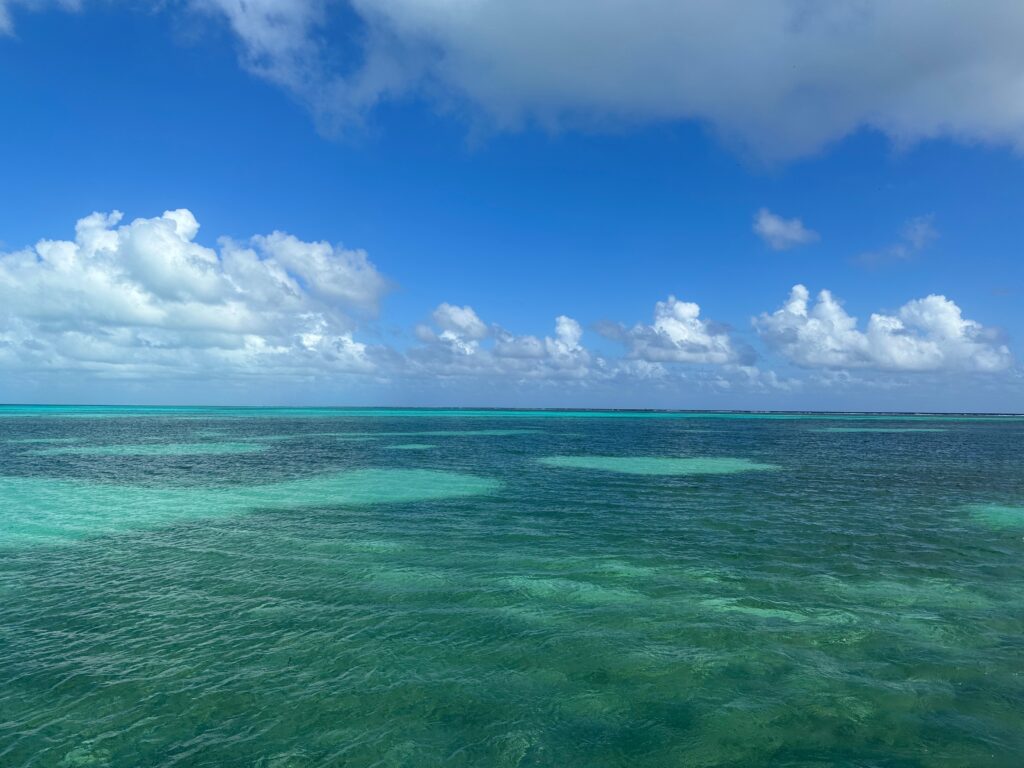
But water aside, what’s to fear? Well, here is a non-exhaustive list of all the different ways to die underwater:
Attacked by a shark. Does it happen? Yes. About 80 times per year. Only three species really account for these attacks — Great White, Tiger, and Bull sharks — and usually it’s a case of mistaken identity. Stop swimming like a seal or with actively bleeding wounds and you’ll be fine. For comparison, humans kill approximately 80 million sharks per year. So the ratio is, you know, lopsided.
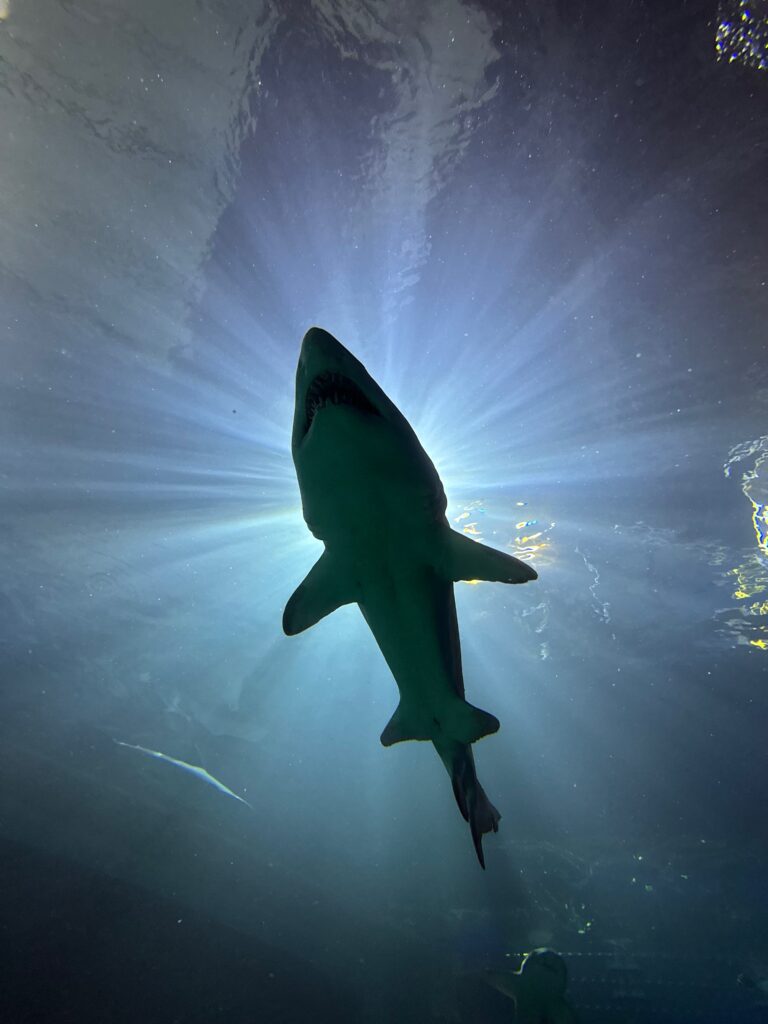
Swallowed by a whale. This has happened as recently as 2021 off of Cape Cod. Usually when this happens, it’s a brief, accidental gulping-down of plankton and whatever else — like a hapless human — happens to be in the water. And then a big ol’ regurgitation. But it does happen. Note for book-lovers: Whalefall by Daniel Kraus takes the concept of interior monologue to horrific depths.
Cephalopod attack! Lotta creatures in this category, but mostly we’re looking at giant octopus and squid. Obviously the tentacles are an issue, but so is the very hard and pointy beak. Also, all octopuses are venomous, though almost none can deliver a fatal dose to humans. Except the greater blue-ringed octopus whose venom in one dose can kill 10 people. (So … don’t touch that one.) For what it’s worth, cephalopod attacks are extremely rare. But you gotta admit that going down in a writing mass of tentacles, while being stabbed by a beak, and filling with poison — oh, also while drowning — seems a terrible way meet Davy Jones.
Speaking of poison, there’s a lot of it under the waves. Basically every category of critter — from invertebrate slime to complex things with backbones — has some member of its class that stings with the nasty juice or which simply cannot be touched because they’re covered in it. (Terminological note: venom is injected; poison is ingested.) Stung by a box jellyfish? Hope your affairs are in order. Walking in tidal pools without foot protection and whoops! that wasn’t a rock it was a stonefish. You’re an idiot and also in for the worst pain imaginable, possibly death if you’re not near help. There are sea snakes, pufferfish, even snails whose toxins will kill you. Oh and the lionfish? That bugger found all throughout the Caribbean because someone no longer wanted it as a pet decades ago? Invasive and venomous. (I blame the first Naked Gun movie.) Even the pretty things that can’t move at all — like coral — are full of nasty. Many coral contain palytoxin, the second most poisonous substance on the planet. Palytoxin kills by way of rhabdomyolysis which is the process by which your muscles literally disintegrate into your bloodstream. You basically melt into yourself. So be on the safe side and don’t inhale or ingest coral.
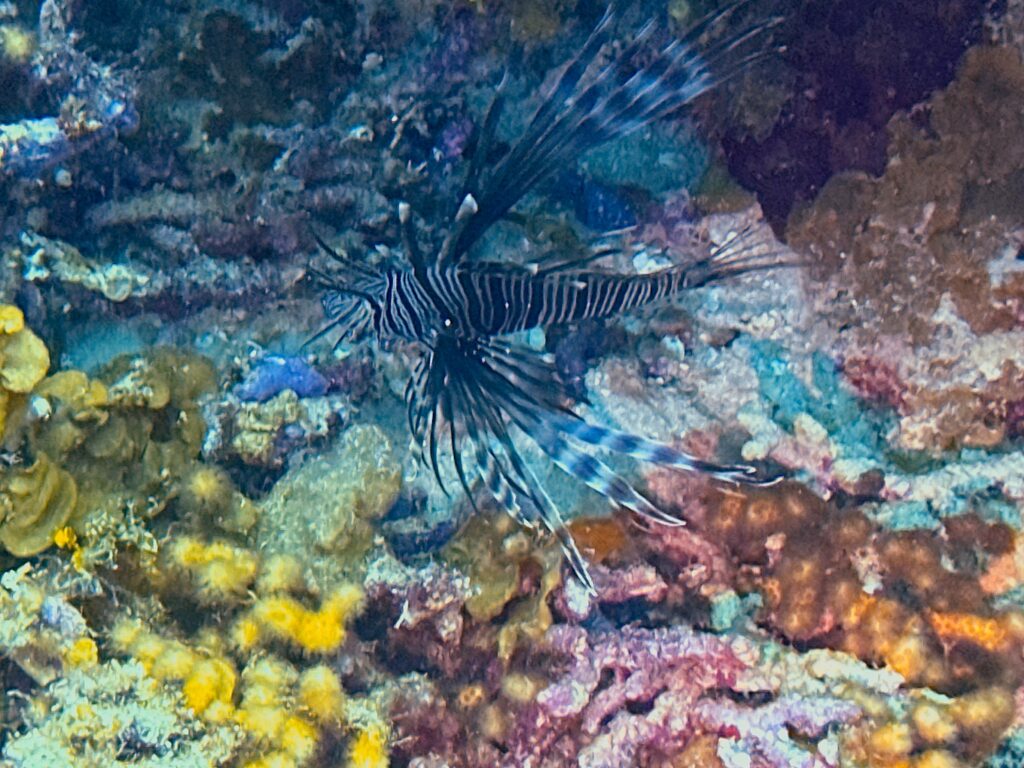
OK those are all ways to die from being attacked. But what about just being in the water in a human body that long ago evolved away from being able to live in water?
Of course you can be stranded where, eventually, you will tire to the point that you can’t stay afloat. Likely you’ll succumb to dehydration or hypothermia — much worse ways to go — before this happens since the human meatbag itself is positively buoyant even if you’re exhausted.
Let’s not forget air embolism, which is why you never hold your breath when ascending from depth (whether you’re snorkeling, scuba diving, or whatever). For every 33 feet you go underwater the pressure on your body (and lungs) increases by one sea level air pressure. And the reverse is true when you ascend. So if you hold your breath while coming up the air in your lungs will expand sorta like hot air balloons that expand as they go up into less dense air. This is a problem as it can rupture your lungs, especially if they were already “full” down deep in high pressure. Explosive decompression of lungs is bad, I think we can all agree. But it’s worse: the body keeps air in all kinds of places — the eye balls, the ears — those will explode too.
Then there are the bends — also known as decompression sickness. This is related to air embolism except in this case the rapid ascent makes nitrogen gas in your blood expand rapidly into bubbles. Those bubbles can go anywhere in the body but often settle in the joints causing people to bend over in excruciating pain. You can die from the bends or be permanently impaired. It can be cured though, if you’re close enough to a hyperbaric chamber — which is a whole different kind of misery. There is also in-water recompression if you’re too far away from help. But this requires going back underwater to depth while you are in excruciating pain. And often doesn’t work.
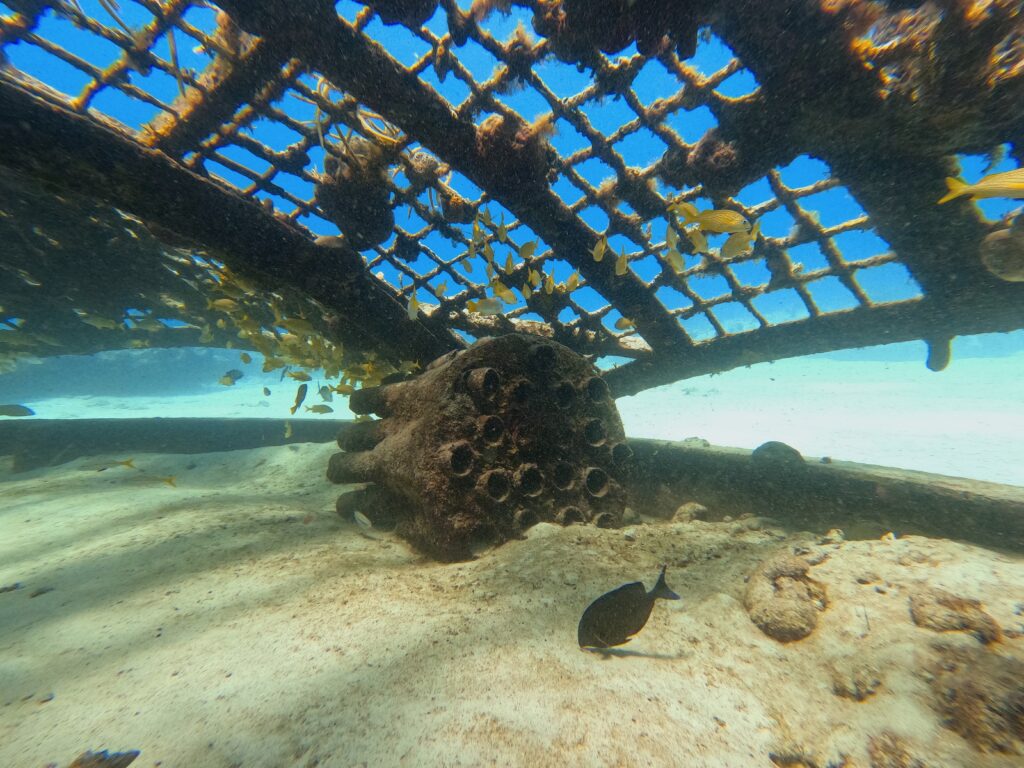
If you’ve seen the end of the movie 47 Meters Down you are familiar with nitrogen narcosis. Simply put, the way our bodies react to otherwise harmless gases at sea level can be very different to those gases under pressure. In this case nitrogen at depths over 100 feet causes an anesthetic, sometimes delirious change in consciousness. That in itself is not a problem, if you recognize it. The issue is that being nitrogen drunk can cause you to lose track of time, air availability, where you are, who you are, etc. The good news: all you need to do to get sober is ascend a little bit. A great device for screenwriters!
Speaking of gases, guess what becomes literal poison is you inhale too much of it? Oxygen! The very thing that normally keeps us alive. The air we breathe on land is 21% oxygen but sometimes scuba divers bump that percentage up for all kinds reasons. Suck that down for too long and you can suffer convulsions and death. With oxygen, like water, it’s fine line between life-giving and life-taking.
Look, there are a zillion ways to die underwater. You could be boiled alive near a geothermal vent or poisoned by accidentally ingesting too much salt water. You and your flimsy tourist sub could be crushed by the incredible pressure way down deep. (Interestingly, physically the human body can go a lot deeper under pressure than you might think. As humans are mostly just squishy flesh and liquid it all compresses fairly well. The problem is the parts of our bodies that hold air. That stuff only compresses or expands so much before your insides look like they’ve been puree’d.)
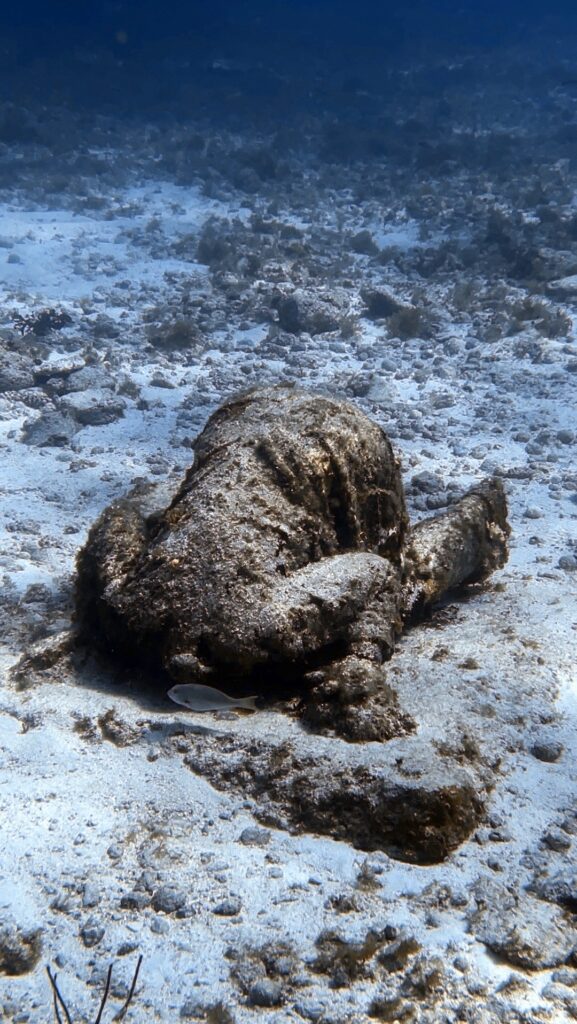
I’m often asked — sometimes by family members who I have forced to scuba dive with me — what’s the most scared I have ever been under the waves. It isn’t sharks. I have never encountered a shark that wanted anything to do with people. It isn’t equipment failure. There’s so much redundancy built-in, it’s just not an overwhelming concern. What has scared me, though, is solitude, the very few times I’ve lost track of my buddy or group. This is tough to do in the crystal waters of tropical reefs, but somehow I’ve done it. Only for a minute or two. But it is terrifying. There are procedures for locating other divers — e.g., look up, because everyone exhales and those long bubble ribbons can be seen from far away — but it is still heart-pounding. Much easier to lose people in murky water or cave systems. Which is why I don’t dive those without a really good reason.
Because of all this danger and unique ways to meet one’s end, there’s a long tradition of underwater horror in fiction. In film you can go back at least as far as 1955’s It Came from Beneath the Sea — probably further, though the technical challenges of filming underwater — hell, the technical challenges of breathing underwater — really only made using it as a film setting possible from the 1960’s onward.
Why do I love this sub-genre so dearly? Maybe because you don’t need much: simply, the environment surrounding you is a threat, an antagonist, a killer. Strictly speaking filmmakers don’t need a monster or a homicidal maniac or a ghost after their characters. The water itself wants you dead. There are a few films that go this route where this water vs. humans’ inability to live in it is the entire plot. See, for example, Open Water and its sequel. (This may also explain my fascination with space horror. The vacuum also wants you dead. More on that in a moment.)
Travelers, here I am mostly interested in movies that take place underwater. There are lots of ways to tell these stories, so here are some general categories organized by exposure where the majority of the movie takes place underwater as opposed to mostly on top of or near it.
- occasionally underwater (e.g., The Reef, The Shallows, Piranha, Jaws)
- mostly underwater (e.g., Deep Blue Sea, Sea Fever)
- underwater in a vessel/ship/outpost (e.g. No Way Up, Underwater, Below, The Poseidon Adventure)
- underwater only in self-contained breathing apparatus (these are very rare! e.g., The Deep House, 47 Meters Down)
- underwater supernatural (e.g. Aquaman, The Little Mermaid, no full-length horror movies of this type though there is the delightful non-sequitur of Fulci’s shark-fighting zombie)
One interesting question to ask when watching underwater horror is: if all this water were replaced by the void of outer space would anything be different? In general, if the answer is no you are watching not a great movie. If yes, then you are at least in store for water-based kills and other aspects of the marine environment that make it uniquely terrifying. Indeed many of the scripts for what became sea stories started as outer space stories. The conversion is not very difficult. Sometimes the film-viewing public seems to want stars and planets, but sometimes, like in 1989, they only want saltwater and sea bubbles.
Let’s backstroke a bit to the year 1989. Something was in the water, for sure. It’s been called the B-Movie Sea Monster Wars where we got at least six underwater horror flicks all in one year. What the hell? Why?
The public may have been primed for undersea tales of doom by the discovery of The Titanic in 1985 by Bob Ballard. That’s one theory. Hard to deny is that after Aliens in 1986 there was a surge in sci-fi movies centered around blue-collar workers finding themselves up against terrifying creatures, usually in a dark, dank, remote setting. Around 1987 everyone in Hollywood apparently that knew James Cameron, coming off of The Terminator and Aliens, was making an underwater flick, which would eventually be called The Abyss, for a summer release in ’89. It wasn’t initially known whether it would be horror like Aliens mostly was. Of course, The Abyss when released was straight sci-fi. But rival filmmakers couldn’t have known as they ramped up their efforts. So we got a lot of underwater horror in a single year that no one really asked for. Let’s swim on over to the films to wrap up this shanty!
DeepStar Six (Jan. 13, 1989)
This creature feature is basically a Friday the 13th reunion. Sean Cunningham, director of the original Friday directs here; Kane Holder, the Jason Voorhees in the later films is the stunt coordinator; even Ronn Carroll, who played the policeman at the very end of the first film is in this flick.
The story here is about to become familiar: a crew is stationed underwater — in this film it is a military installation installing nuclear missiles — when they encounter something nasty. In this case it’s a creature of unknown, possibly alien original.
The character of Snyder played by Miguel Ferrer is a likable horrible person. He tells the ship’s computer that they are under attack at which point the military-minded computer suggests a nuclear counterattack, which Snyder does. This only serves to basically ruin the station with a shockwave. Snyder eventually meets his end by trying to escape in a pod that somehow is not pressurized. He explodes on ascent.
The creature design here is very practical, cool, and gross. And unlike many of the films of 1989 it actually does feel like the setting is on an undersea station rather than a soundstage. Lest you have forgotten its Friday the 13th connections the conclusion of DeepStar Six is a strikingly similar shock ending to that film, which also involved water.
The Rift (aka Endless Descent — March 1, 1989)
It’s possible the best thing about this film is its tagline: “YOU CAN’T HOLD YOUR BREATH & SCREAM AT THE SAME TIME”. And yet, this is not true, I scream underwater all the time.
The plot: an experimental sub is sent to find a lost experimental sub but in the process stumble upon a whole submarine laboratory devoted to genetic engineering experiments. R. Lee Emery (drill sergeant from Full Metal Jacket and later installments of the Texas Chainsaw Massacre franchise) is the stand-out here, though his ability to ad lib demoralizing insults is underused.
There are some underwater sequences outside the sub, though it is clear the budget demanded that they find an air-filled cave several miles under the sea where they could film more normal walking-around scenes on a dry set. All effects in The Rift are models and practical, though literally nothing would suggest they were on a submarine — almost as though they were going for a 1950s sci-fi look.
One thing that made me chuckle is that the filmmakers basically avoided the problem of dialogue when underwater. Everyone talks to each other normally with regulators in their mouths. OK. It’s almost like the filmmakers didn’t even care that the story was supposed to be underwater. Like, how is there a lidless aquarium on a submarine? How are people still breathing after a massive, fiery explosion in an underwater cave?
Leviathan (March 17, 1989)
The Rift was released two weeks before our next film, Leviathan, and was also produced by DeLaurentis. Leviathan’s budget: $30M. The Rift’s budget: a hell of a lot less. The plot is basically the same though. Do investors think “You know what, this is a good story, but I think it would do better with laughable production design” because that’s essentially what happened here. Or maybe it was a kind of A-B test: let’s see which film style audiences like more?
In any event Leviathan has a stellar cast: Peter Weller, Richard Crenna, Daniel Stern, Hector Elizondo, Ernie Hudson. But most importantly, Stan Winston and his team did the effects — and oh my did they. The genetically engineered creature is The Thing amped way up. It’s basically a slimy, clawed, tentacled mass of flesh that assimilates anything it comes in contact with. Just wonderful grotesque body horror. Also of note are the deep sea mining scuba suits, which are used to fun dramatic effect. We can thank Winston for these as well.
If you see only one of these six movies Leviathan should be it.
Lords of the Deep (April 21, 1989)
This film produced by Roger Corman could easily have been made in 1973, aesthetically. There’s a definite Space: 1999 vibe here. Here’s the thing: this isn’t a well-made movie, but it is a well-done movie. If shlock isn’t your thing may I suggest you watch this via Mystery Science Theater 3000 which did a hilarious job annotating it in season 12?
Hard really to know what’s going on here. There’s alien goo and impending global natural catastrophe (as the opening crawl tells us “In the year 2020 – Man has used up and destroyed most of the Earth’s resources.”) Also there’s a homicidal computer, ala HAL, and an insane station commander.
You might enjoy the earnest overreacting of Priscilla Barnes from late era Three’s Company. Or you might enough the truly laughable puppetry of the creature. Or you might not. One thing is for sure when it is all over you will still not be sure who the lords of the deep are.
Alien from the Abyss (May 27, 1989 — aka Alien from the Deep)
Never count out the Italians when there is a horror film trend to be capitalized upon. This was one of the last films in the storied career of Antonio Margheriti who brought us Castle of Blood and Cannibal Apocalypse, among other gems.
The story here follows a Greenpeace camera crew investigating a volcano where the military is dumping radioactive waste. It’s basically one extended jungle chase sequence. Lots of snakes. So much so that it doesn’t go underwater until more than halfway through the film and even then not for long.
You may be thinking radioactive waste dumped into a volcano — this is a 1950’s-esque mutant film right. Incorrect. The baddie here is an alien under the sea. Huh? I have no explanation, but there is great gore and the Kaiju-like creature is pretty great once we’re allowed to see more than its claw. The ending is ripped straight from Aliens as our Greenpeace activists do battle with front loader heavy machinery.
Honestly this was a pretty good film, even if it barely fits into any of our underwater horror categories.
The Evil Below (July 1, 1989)
This is also an Italian film, dubbed as horribly as you’ve comfortably come to love in giallo films.
The premise here is promising: a crew is searching for the shipwreck of El Diablo, a ship whose cargo included stolen religious artifacts. But also a curse! You see, this is a haunted shipwreck. There are underwater sequences, but they are so poorly shot it is nearly impossible to see much less figure out what’s happening. I’m not sure what the evil was in The Evil Below, but it was below. So no misleading advertising here.
Here’s a handy reference chart for our journey through this unique moment in cinematic history:

Well, travelers, it’s time to surface. I hope you enjoyed our excursion under the waves. Let’s take this slowly and gently. Exhale on ascent. Don’t look down. Who knows what swimming up beneath us?
Occultation in Texas
My son and I intercepted the total solar eclipse on April 8. It was even more remarkable — larger, darker, spookier — than the only other we’ve seen in Wyoming in 2017.

We were relatively unprepared for the one seven years ago (eye protection, yes; ways to capture the experience, not really). But since then — and with the help of an annular eclipse dry run last October — we were ready this time. We knew we wanted to be as near the centerline as possible but with the ability to call a cloud cover audible if needed.
On the morning of the eclipse we headed south from Fort Worth, Texas to a small town called Hillsboro (excuse me, Eclipseboro) but upon arrival determined the clouds were too risky. So we motored northwest, giving up about a minute of totality for what we hoped were clearer skies. Destination: Glen Rose. We found a public park on a branch of the Paluxy River right in town and set up shop.
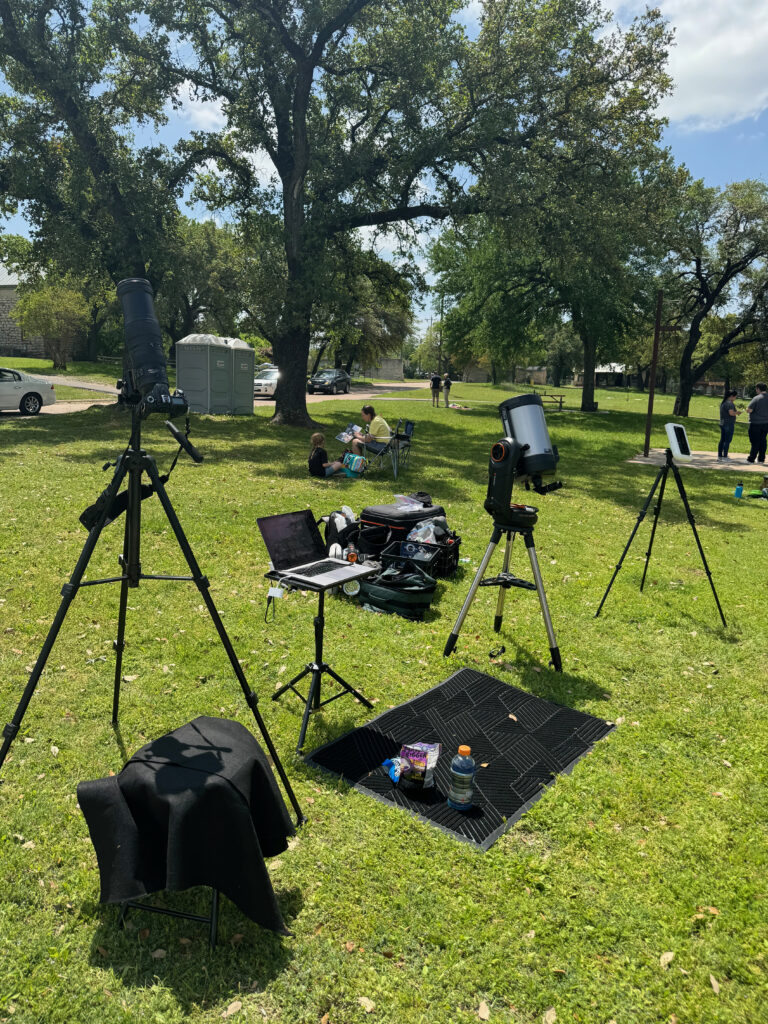
We had three viewing rigs:
- Nikon D90 dSLR + Nikkor zoom lens (AF-S 200-500mm f/5.6E ED VR) + Haida solar filter. This was controlled via USB connected to a MacBook running AstroDSLR, mostly to relieve the tedium and distraction of snapping lots of photos during totality but also to avoid slightly jiggling the rig with a button press on the camera body.
- Celestron NexStar Evolution 8″ telescope + solar filter. I never did turn tracking on as the sun was fairly easy to spot. I probably should have enabled it though. (Next time!)
- The new Vaonis Hestia mount for iPhone. This small white box held the phone in place over its magnifying ocular (with solar filter) allowing photography and on-device processing in real time. I used an iPhone 15 Pro Max. It captured remarkably good photos, such as the composite above.
Having done this a few times by this point I was looking forward to the mix of normal people just out to have their minds blown (often with small children) and giant astronomy nerds ready to shout “first contact!” and similar at every moment of the event. I suppose there are other types of people who show up for eclipses — astrology zealots, doomsday cultists, daytime-curious vampires — though none did where we watched unfortunately.
The moments approaching totality were especially surreal as the day, which normally darkens from a fixed point on the western horizon, got shimmeringly dark from everywhere at once. Light through leaves and colander holes reminded us that our celestial flashlight was no longer circular. We peered through obsidian glass (supposedly used by ancient Mayans to view eclipses, which they accurately predicted). While the obsidian monocle seemed just as dark/protective as our ISO-certified glasses in hindsight maybe I should have verified that.

And then it went dark and the protective eyewear finally came off. I’m sure I could look it up to confirm or deny, but it felt like the sun-moon duo was closer in space to us than in 2017 because that scary black hole in the sky looked much bigger. Loopy prominences licked around the edge of the disc while we stared up slack-jawed for both the longest and shortest three minutes and fifteen seconds of our earthbound existence. I couldn’t help but think about how terrifying it all would have seemed for pre-scientific peoples viewing a total solar eclipse. A few minutes of inexplicable darkness and then … right back to normal. (A Navajo friend of mine noted that his people do not view the eclipse as a matter of respect. Tradition holds that it is a time of intimacy between the sun and the moon. Voyeurism is impolite.)
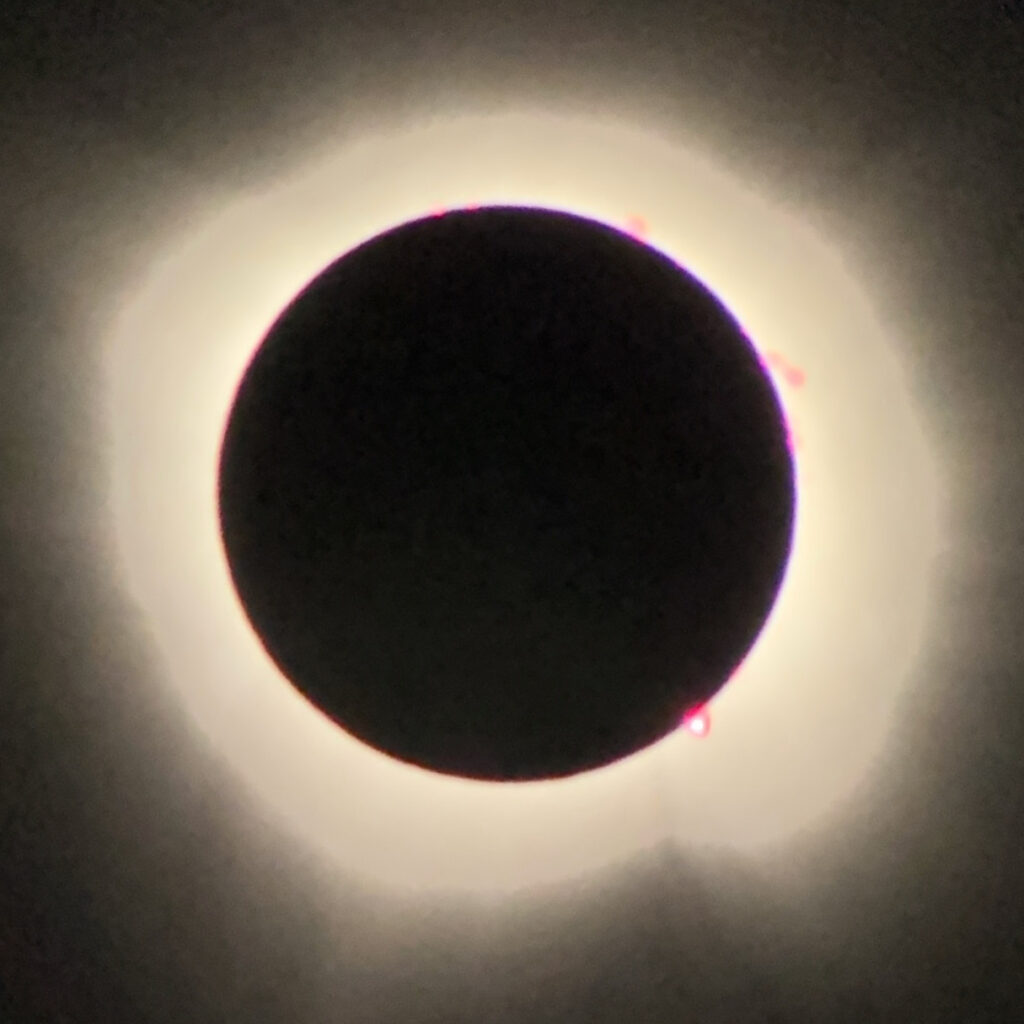
While we were dumbstruck in Texas (and as my other son was preparing for the umbra hurtling away from us and towards him in Vermont at 2,000 MPH) my wife was on an airplane over Ohio. She noticed little crescent-shaped sparkles on the cabin wall next to her window seat. This disco ball effect was caused by reflections from the partially-eclipsed sun glinting off her wedding ring! As my wife was the only person in her section who brought eclipse glasses, she eventually had the whole cabin at her seat staring at our moon nudging in front of our star.

On the drive down from Denver I learned quite by chance that helium is so named because its presence was spectroscopically determined during an 1868 eclipse in India. The chance part of my learning this was due to my stopping at the Helium Time Columns Monument time capsule in Amarillo, Texas — former site of our nation’s strategic helium reserve. Even though helium is the second most abundant element in the universe, those dirigibles and zeppelins weren’t gonna inflate (or blow up) themselves. So America stockpiled.

But back to Glen Rose. Other than being in the crosshairs of totality, this pretty little town is the jumping off point for two related points of extreme cognitive dissonance.
The Paluxy River flows right through town and into Dinosaur Valley State Park, where over the last millions of years it has eroded various types of rock to expose Early Cretaceous dinosaur tracks of both sauropods and theropods. The fun thing about these trace fossils is that they exist almost exclusively in the flowing riverbed itself. You gotta wade if you wanna nerd up. Often because of high water the tracks are not visible at all. But on my visit they were on full display. It was rainy and wet (obviously) which gave the expedition a slight air of danger but the park is well-signposted and easily accessible. Plus, with water continuing to erode the riverbed, this priceless evidence of dinosaur behavior is slowly being erased. Catch them while you can. (Or go see this entire section that was lifted out and sent to the American Museum of Natural History in NYC.)
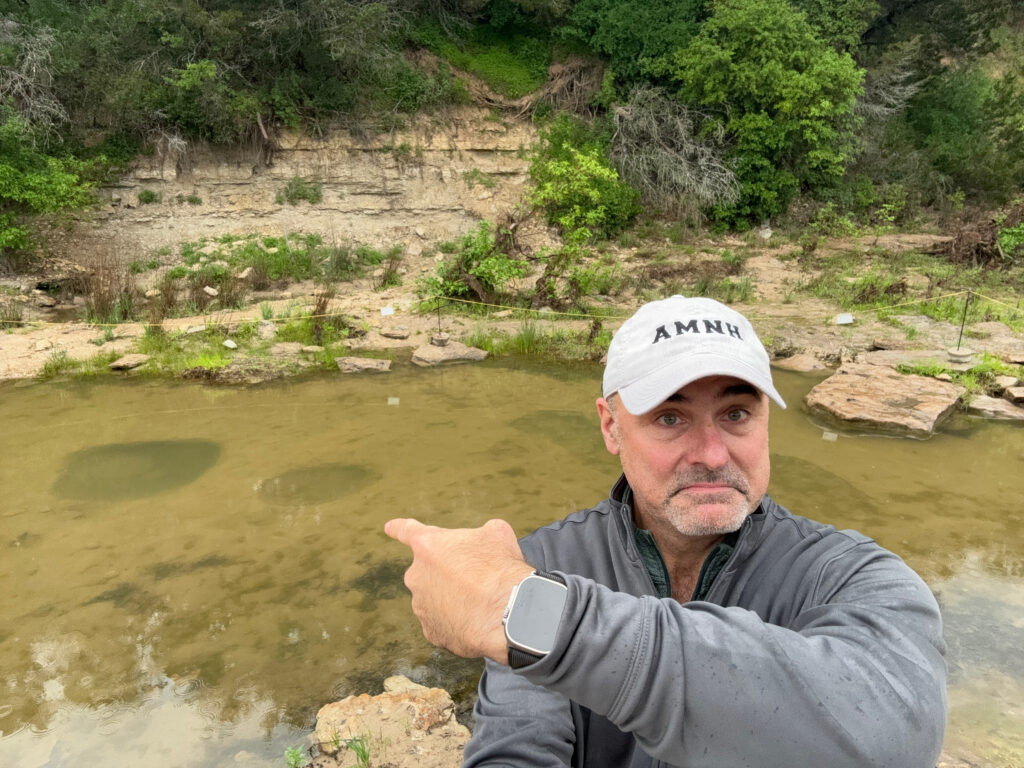
But scientific artifacts are not the only thing this river has gurgled up. Glen Rose is also home to the Creation Evidence Museum where tracks lifted from the Paluxy are purported to prove that humans lived side-by-side with dinosaurs, Flintstones-style, which of course thus proves biblical creationism, an earth only 6000 years old, and other utter fictions. The contortions this museum wriggles itself into to prove that the fossil record synchs with the bible are comical: mapping geological epochs to precise days of biblical flood, building a model of an ark complete with holding zones for Tyrannosaurus rex (seems unwise, Noah), and a giant hyperbaric chamber meant to recreate conditions for bringing non-avian dinosaurs back to life. What.
The centerpiece of the museum are tracks that show impressions of human footprints next to or overlaid on dinosaur tracks. Most of the footprints are deliberate fakes created to sell during the Great Depression but the urge to validate an already-held belief can be powerful and sometimes you build an entire fantasyland around that. Of course, there’s margin for error in all paleontological and geological time estimates but being off by 100 million years is, you know, well outside that margin. We actually find evidence of ancient peoples next to dinosaur tracks all the time. They were as fascinated by fossils as modern humans are, but that doesn’t mean that humans rode Velociraptors bare-back.
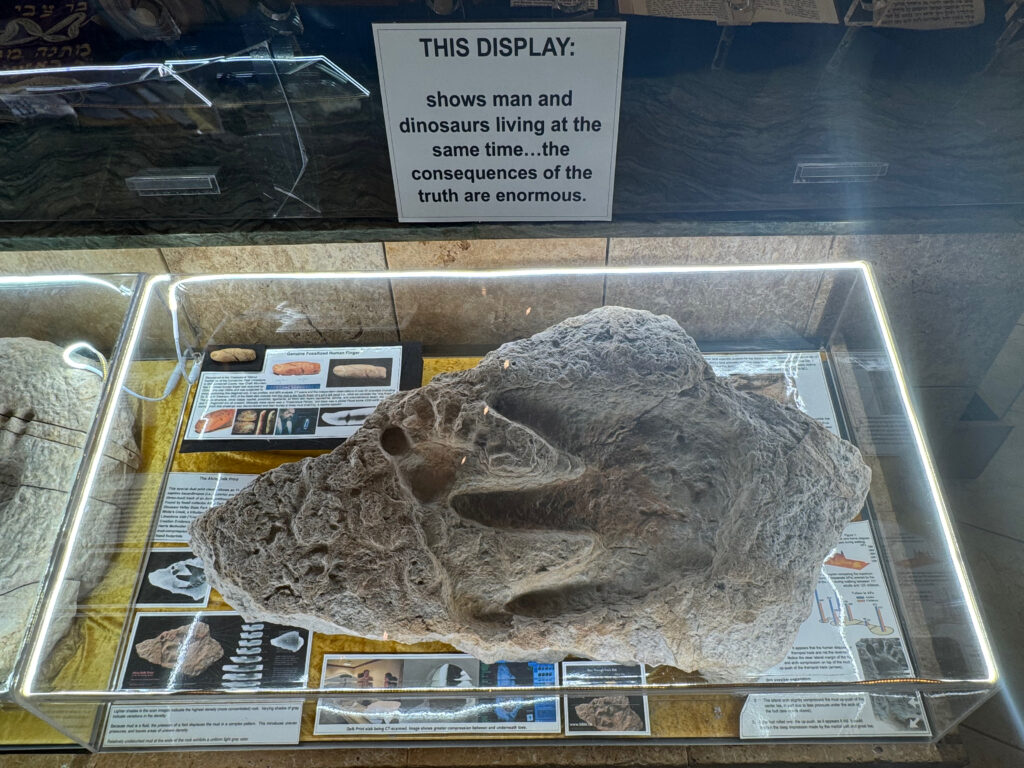
It was difficult to maintain a straight face in this place, I admit. The cartoonishly white-coated and goggled “scientists” running around a lab full of seemingly legit equipment (what exactly were they testing?); the bus full of home-schooled kids, grist for the generational conspiracy theorist pipeline; the non sequitur side exhibit on the moon landing (presented as real, not a conspiracy — possibly meant to allay fears that the curators are complete crackpots). An entire universe of fallacy meant to make people feel good about not questioning their faith.
We don’t still believe eclipses are a dragon eating the sun, or celestial gods at war, or even a moment of intimacy (the Navajo offer this respect out of cultural tradition). Science advances because we constantly question it. It’s how we discover helium. It’s how we verify Einstein’s General Theory of Relativity. It’s how we know exactly where to stand in a beautiful little town in Texas to view a rare astronomical event. So, thank you, science. And thank you Creation Evidence Museum, for the concise if troubling example of what happens when you want to be comfortable in belief rather than disquieted by truth. Go see the next total solar eclipse, friends. (Or better yet, go see the 2027 eclipse over the pyramids of Egypt!).
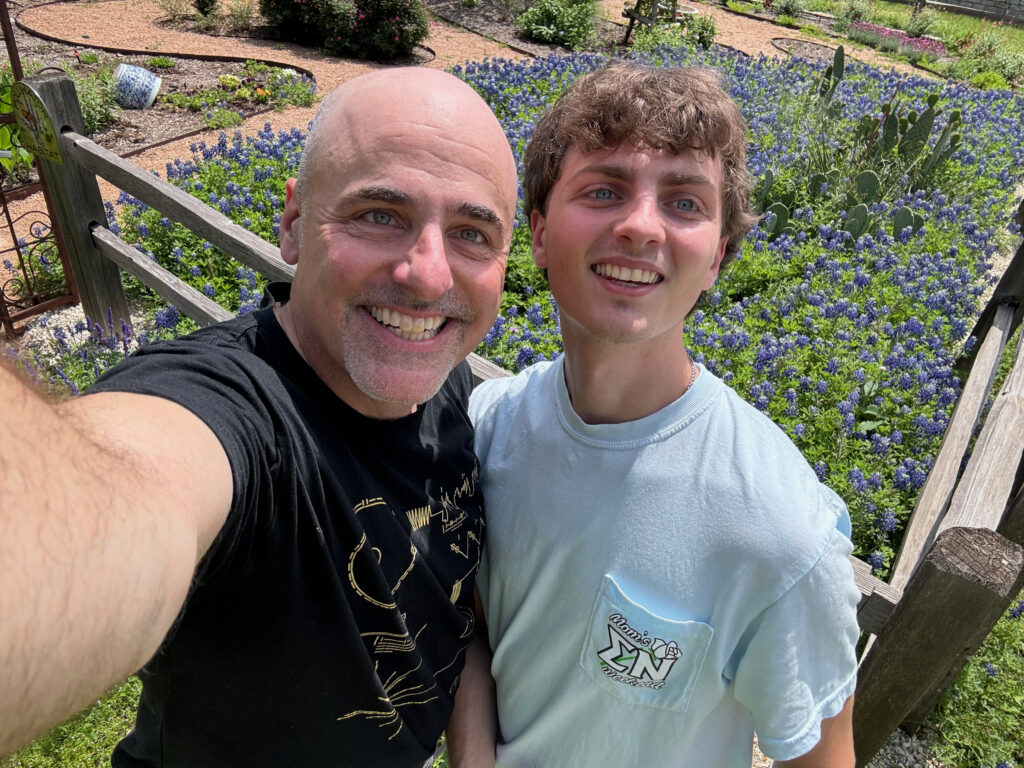
Itinerary footnote: this journey included a few other stops related to dinosaurs and crazy right-wingers: An easy hike to the KT boundary in Trinidad Lake State Park (lots of shocked quartz layers from the meteor impact that ended the reign of the dinosaurs 66 million years ago); the excellent dinosaur trackways of Clayton Lake State Park in New Mexico, where tracks became visible when a reservoir spillway was constructed decades ago; and Bishop Castle, the monomaniacal building project of a father-son duo in rural Colorado that is what happens when someone really loves the garden gnome aesthetic and spatial logic of M.C. Escher while also hating workplace safety and all forms of government.


